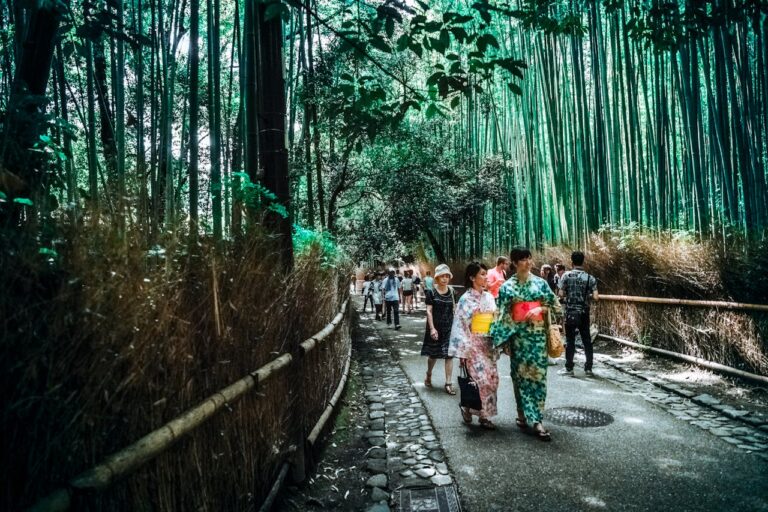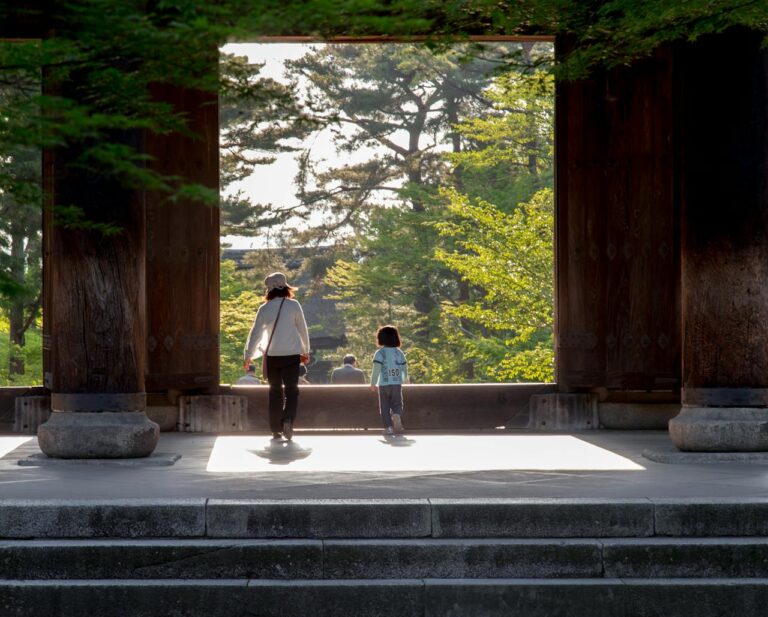Things to Know Before Traveling to Seoul
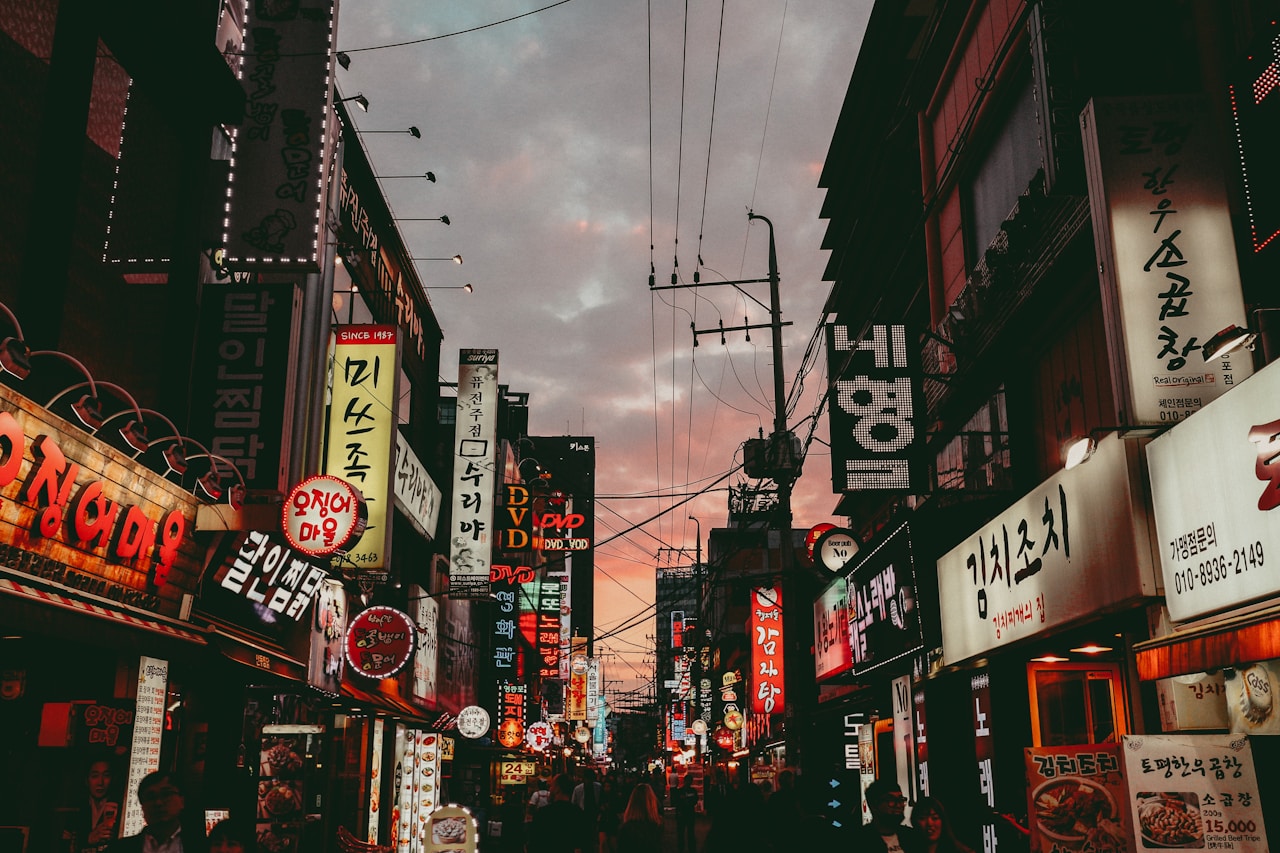
Seoul offer travelers with its seamless blend of ancient tradition and cutting-edge technology. There are several things to know before every first-time visitors fully appreciate this dynamic metropolis.
- Preparing for a Trip to Seoul
- Visa, Entry Requirements, and Travel Documents
- Planning a Trip to Seoul Korea: Budget and Costs
- Where to Stay in Seoul for First-Time Visitors
- Transportation Tips for Traveling to Seoul
- Essential Seoul Travel Tips for First-Time Visitors
- What to Eat and Where to Dine in Seoul
- Best Attractions and Activities for a Vacation in Seoul
- Best Time to Visit Seoul and Weather Considerations
- Final Tips for a Smooth Vacation to Seoul
- Wrapping Up
It must be navigate cultural nuances, transportation options, and seasonal variations. However, the city’s efficient subway system transports guests between centuries-old palaces and neon-lit shopping districts within minutes.
Yet beneath the obvious attractions lies a complex urban landscape that rewards the prepared traveler. These essential insights will transform a standard vacation into an authentic Korean experience.
Key Takeaways:
Hide- Spring (March–May) and fall (September–November) offer the best weather with beautiful cherry blossoms or autumn foliage. 🌸🍁
- Most tourists enjoy visa-free entry but require K-ETA authorization online before arrival. 🛂💻
- Public transportation is extensive with English signage, and T-Money cards enable cashless travel throughout Seoul. 🚇💳
- Cultural etiquette emphasizes respect for elders, quiet behavior in public, and strict recycling practices. 🙇♂️🤫♻️
- Daily budgets vary widely, with mid-range travelers typically spending $50–100 on accommodations and $15–30 on food. 💰🛏️🍜
Preparing for a Trip to Seoul
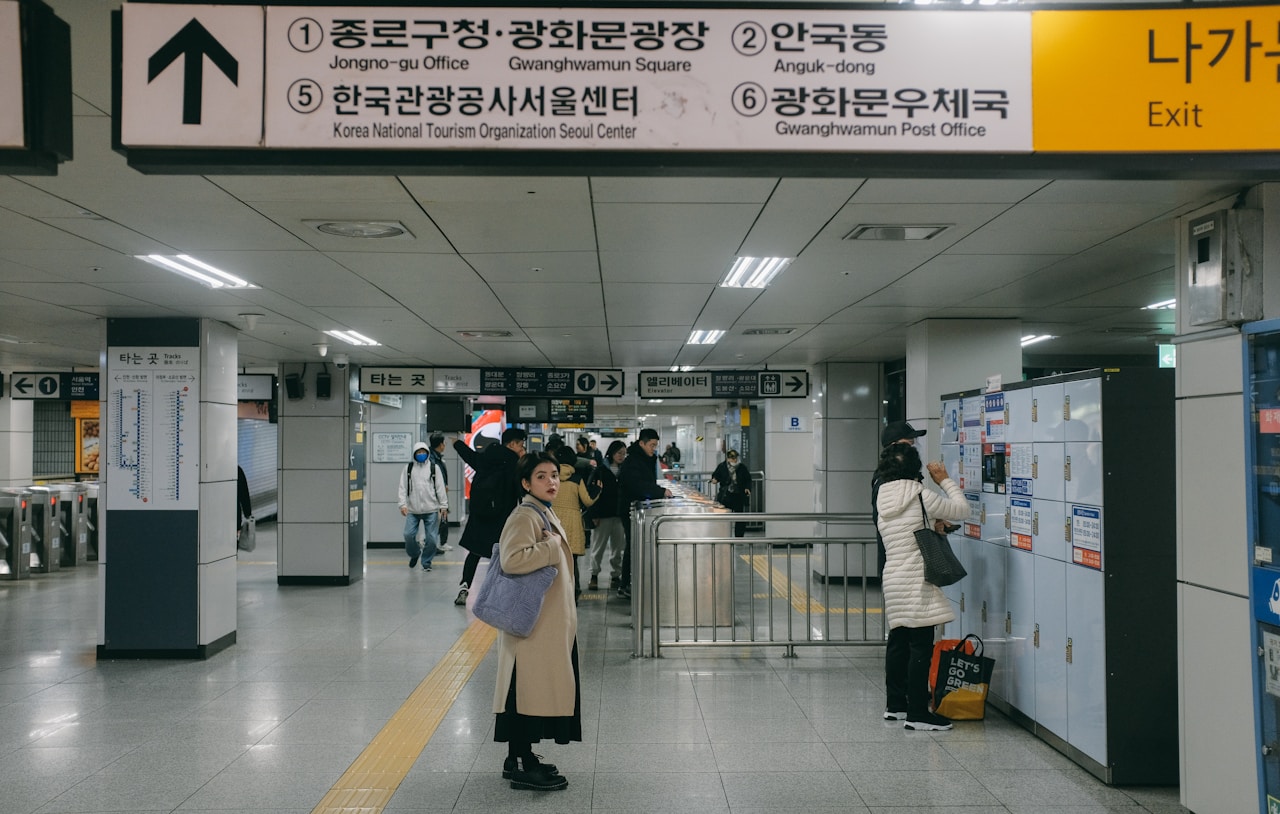
Seoul welcomes visitors with a lively blend of ancient temples and futuristic skyscrapers, offering diverse experiences across its distinct neighborhoods.
First-time travelers will find an efficient public transportation system, abundant English signage, and a remarkably safe environment that makes navigation straightforward.
Read more: Top Things to do in Seoul
Seoul particularly appeals to food enthusiasts, history buffs, and shoppers, though nature lovers can also enjoy nearby mountains and the Han River that cuts through the city’s heart.
What Is Seoul Like for Visitors?
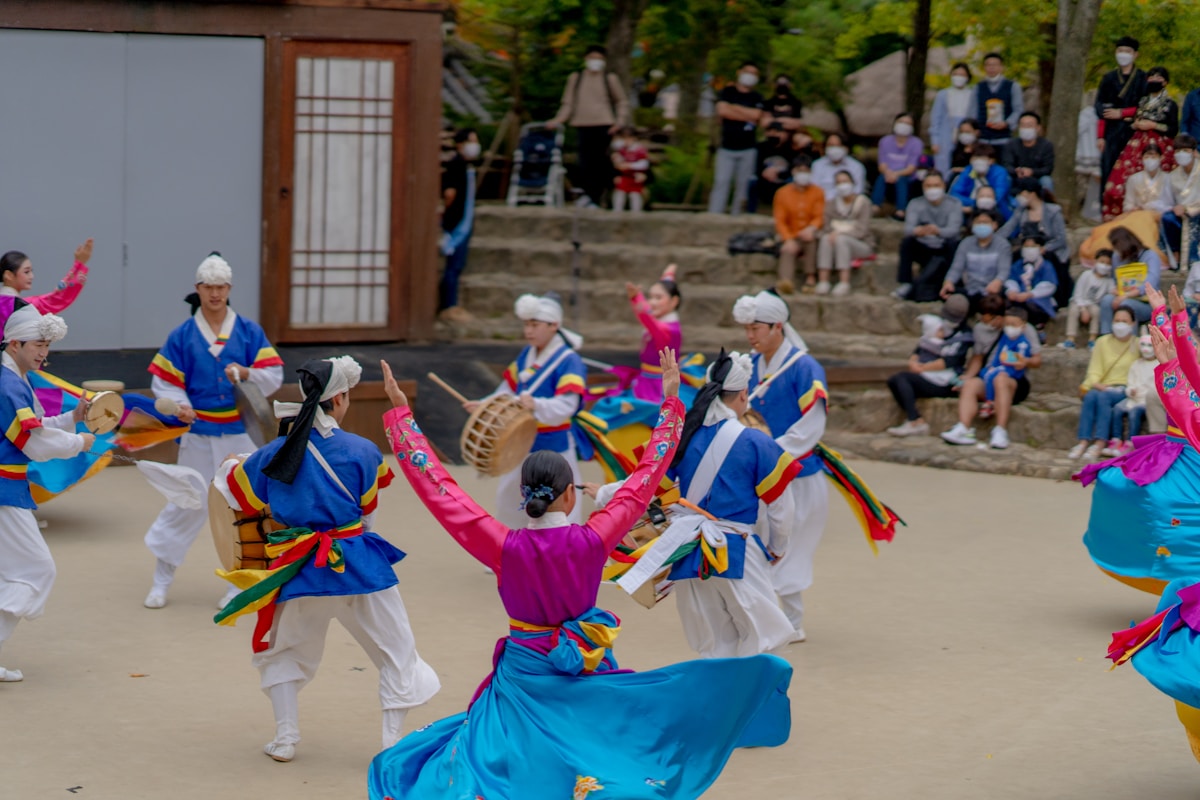
Seoul captivates visitors with its harmonious blend of ancient palaces nestled among sleek skyscrapers.
The city maintains an impressive safety record and cleanliness standard, with spotless public spaces and orderly transportation systems.
Travelers should prepare for a culture that values public etiquette, including quiet behavior on public transit, proper recycling practices, and customary removal of shoes when entering homes and certain traditional establishments.
1. A Blend of Tradition and Modernity
A striking juxtaposition of ancient palaces and gleaming skyscrapers characterizes South Korea’s capital, offering visitors an immersive experience where centuries-old temples stand in the shadow of modern architectural marvels.
This duality makes Seoul travel uniquely rewarding for tourists seeking both cultural heritage and contemporary attractions.
Visiting Seoul provides authentic opportunities to witness a society that honors tradition while enthusiastically embracing innovation.
2. Safety, Cleanliness, and Public Etiquette
Beyond its cultural contrasts and stunning architecture, tourists consistently rank Seoul among the world’s safest metropolitan destinations.
When traveling to Seoul for the first time, visitors appreciate these hallmarks of Korean society:
- Negligible street crime rates throughout the city
- Impeccably clean public spaces and transportation systems
- Clear expectations for public behavior when visiting Seoul Korea
- Respectful queuing culture in South Korea
- Dedicated recycling systems that visitors should follow
Is Seoul a Good Place to Visit for Different Travelers?
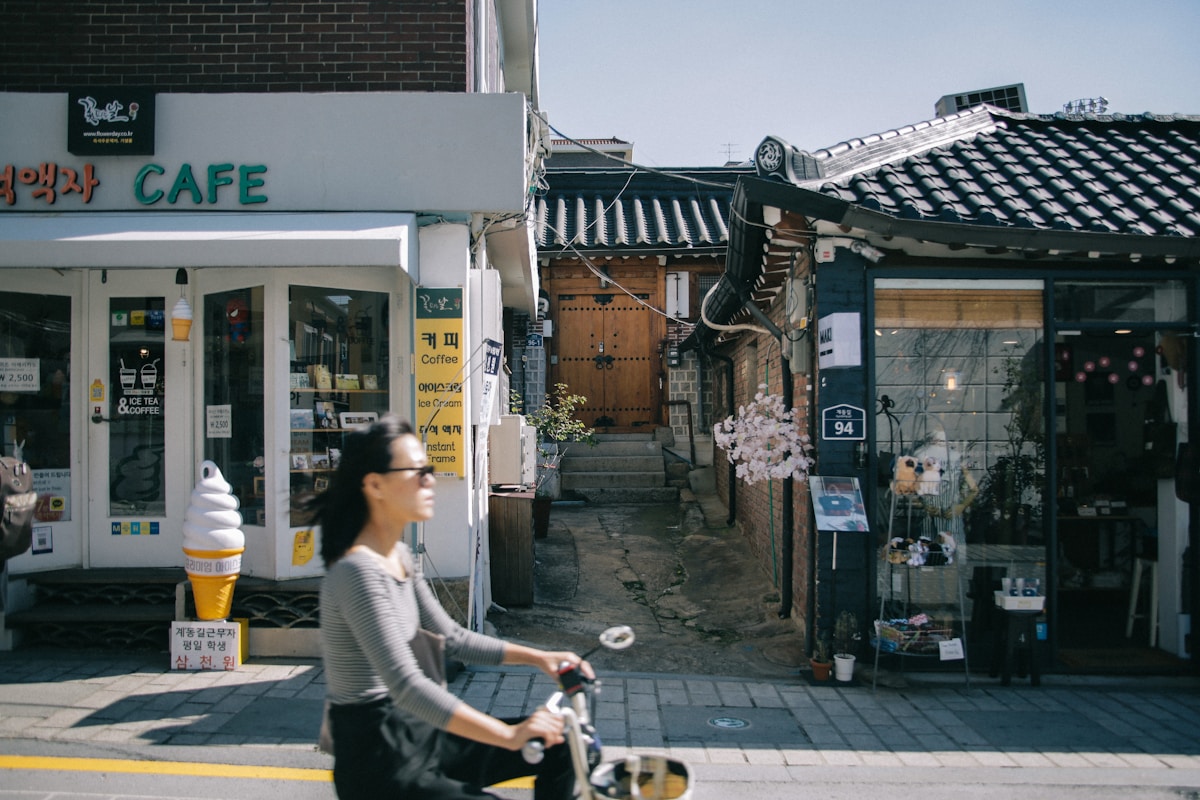
Seoul offers distinct experiences for solo travelers seeking cultural immersion, families exploring kid-friendly attractions like Lotte World, and couples enjoying romantic spots such as Namsan Tower.
Weather patterns influence the travel experience, with spring (March-May) and fall (September-November) providing comfortable temperatures and scenic beauty ideal for outdoor exploration.
Summer brings monsoon rains while winter showcases festive holiday decorations but requires warm clothing for the frigid temperatures.
Solo Travelers, Families, and Couples
Many travelers wonder if Seoul can accommodate their specific travel needs and preferences. Seoul offers diverse experiences for different travel styles when vacations to Seoul are planned thoughtfully.
- Solo travelers find Seoul exceptionally safe with efficient public transport.
- Families enjoy kid-friendly attractions like Lotte World and interactive museums.
- Couples discover romantic settings at Namsan Tower and Hanok villages.
- Budget travelers benefit from affordable street food and cultural sites, and many free thing in Seoul to enjoy
- Adventure seekers find hiking trails and lively nightlife when traveling to Seoul.
Best Times for a Vacation in Seoul
When planning a vacation to Seoul that suits different travel styles, there might be a specific best time to visit Seoul becomes a key consideration that greatly impacts the overall experience.
Spring (April-May) and fall (September-October) offer mild temperatures and stunning foliage for traveling to Seoul, Korea.
Summer brings festivals but humidity, while winter delivers sparkling holiday displays despite cold temperatures. Each season presents distinct advantages for a vacation to Seoul.
Visa, Entry Requirements, and Travel Documents
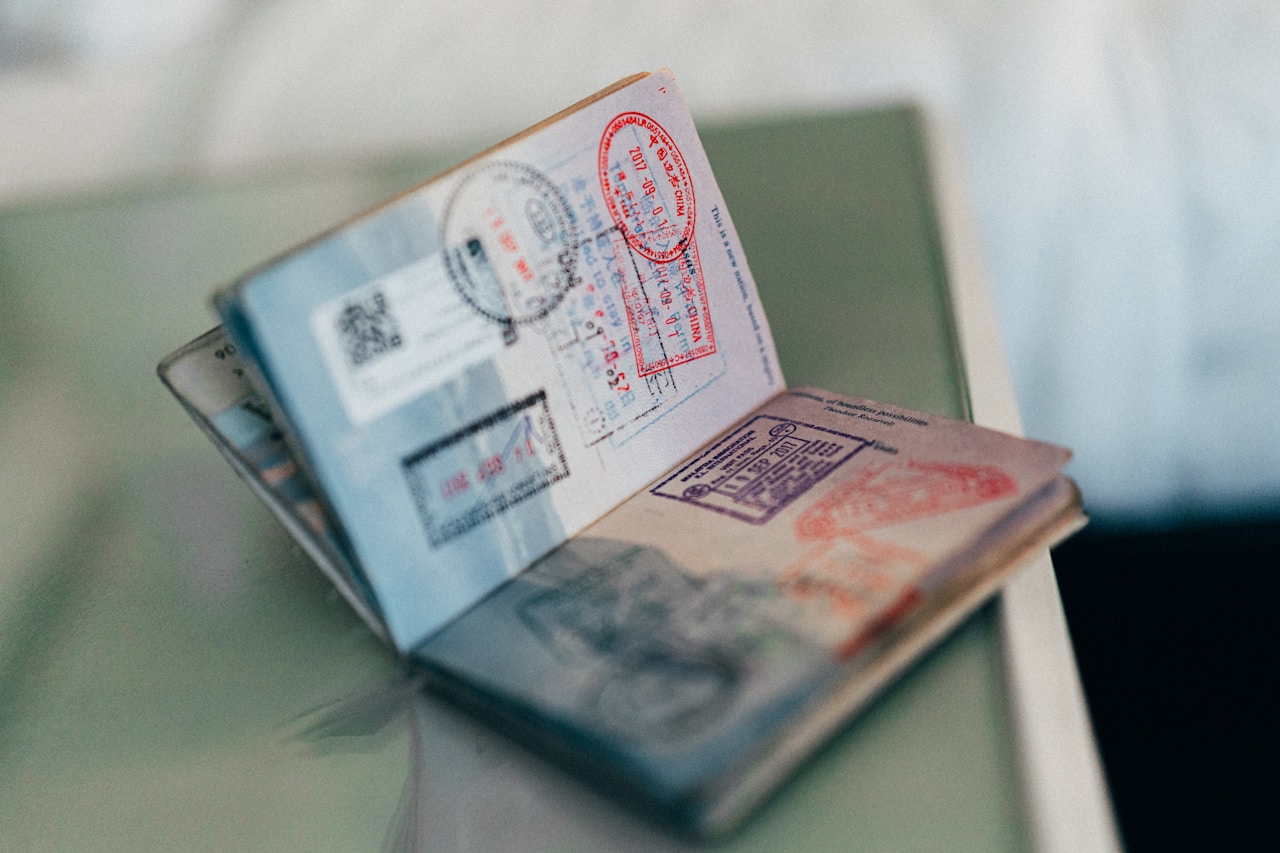
Travelers planning a visit to Seoul must determine whether they need a visa based on their nationality, intended length of stay, and purpose of travel.
South Korea offers visa-free entry for citizens of many countries for short-term tourism, typically ranging from 30 to 90 days.
Essential travel documents include a passport valid for at least six months beyond the planned departure date, return tickets, proof of accommodation, and sufficient funds to support the stay.
Do You Need a Visa to Travel to Seoul Korea?
Many countries enjoy visa-free entry to South Korea for tourism, including the United States, Canada, and most European nations, with stays typically limited to 90 days.
Travelers from countries not eligible for visa-free entry must apply for a tourist visa through the Korean embassy or consulate in their home country prior to departure.
All visitors to Seoul must have a valid passport with at least six months validity beyond their planned departure date, regardless of visa requirements.
1. Visa-Free Entry for Certain Nationalities
South Korea offers visa-free entry to citizens of numerous countries, allowing them to visit Seoul without the bureaucratic hurdles of visa applications.
- US, Canadian, and EU citizens typically receive 90 days visa-free.
- Australian visitors enjoy a 90-day entry without visa requirements.
- UK passport holders can stay for up to 6 months.
Most visa-exempt visitors must have a passport valid for 6 months. K-ETA online authorization is required for most visa-free travelers.
2. How to Apply for a Tourist Visa If Required
While numerous nationalities enjoy visa-free access to South Korea, citizens from many countries still require a tourist visa to explore Seoul’s lively streets and cultural landmarks.
Applicants must submit completed forms, passport photos, proof of finances, and accommodation details to the nearest Korean embassy or consulate. Processing typically takes 5-15 business days, with fees varying by nationality. Online applications are available in select countries.
Important Travel Documents to Prepare
Travelers to Seoul should guarantee their passports remain valid for at least six months beyond their intended departure date and be prepared to complete arrival cards upon entry.
Health documentation requirements have evolved since the COVID-19 pandemic, with South Korea periodically updating its regulations regarding vaccination certificates or negative test results.
Visitors should check the Korean Immigration Service website for the most current health protocols before their journey, as requirements may change with minimal notice.
1. Passport Validity and Arrival Cards
For all international visitors to Seoul, passport validity is a critical entry requirement that must be addressed well before departure.
South Korea typically requires passports remain valid for at least six months beyond the intended stay.
- Most visitors complete arrival cards during flight
- Cards require accommodation address
- Passport validity verified at immigration
- Electronic entry possible for some nationalities
- Retained documentation necessary throughout stay
2. Post COVID-19 or Health Regulations
Beyond passport requirements, health regulations for entry into South Korea have evolved considerably since the COVID-19 pandemic.
As of 2023, South Korea has lifted most COVID restrictions. Travelers no longer need to provide vaccination certificates, negative tests, or quarantine upon arrival.
However, requirements can change rapidly based on global health situations, so visitors should verify current regulations through official sources before departure.
Planning a Trip to Seoul Korea: Budget and Costs
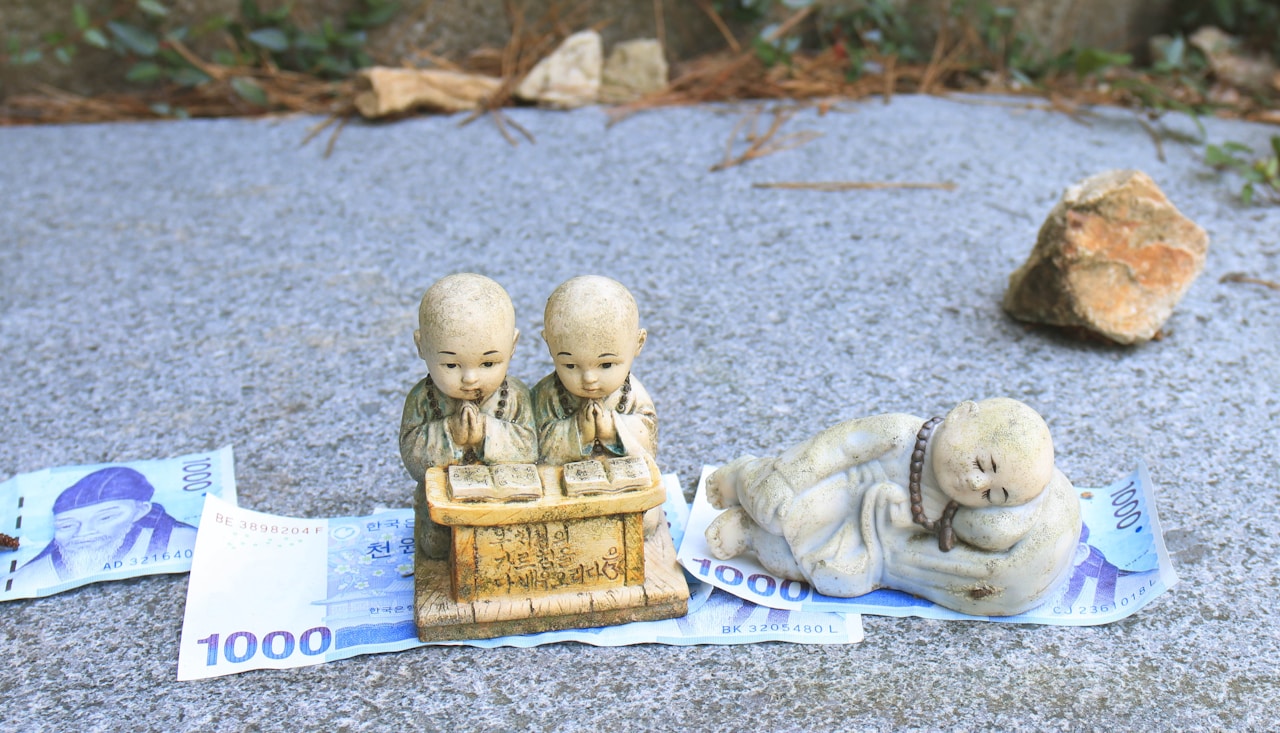
Seoul offers a range of vacation experiences from budget-friendly to luxurious, with costs varying based on accommodation choices, dining preferences, and transportation methods.
Savvy travelers can stretch their funds by using public transportation, eating at local markets, and taking advantage of free cultural sites and performances.
Purchasing a Seoul City Pass and visiting attractions during off-peak seasons can further reduce expenses while maximizing cultural experiences.
How Expensive Is a Vacation to Seoul?
Travelers to Seoul can expect to spend approximately $50-100 per day for mid-range accommodation, local meals, and efficient public transportation.
Budget-conscious visitors will find affordable options in guesthouses, street food stalls, and neighborhood markets, while luxury seekers can indulge in five-star hotels and high-end dining experiences in districts like Gangnam.
The city offers remarkable value across budget tiers, with even modest spending yielding memorable cultural experiences.
1. Average Daily Budget for Accommodation, Food, and Transport
When planning a trip to Seoul, understanding the average daily costs is essential for creating a realistic budget.
Travelers can expect to spend:
- $50-100 for mid-range accommodations
- $15-30 daily on local food
- $7-10 on public transportation
- $10-15 for attractions and museums
- $20-30 for incidentals and entertainment
These estimates allow for comfortable exploration without overspending.
2. Where to Find Affordable and Luxury Experiences
Whether seeking budget-friendly options or upscale indulgences, Seoul offers a remarkable spectrum of experiences across every price point.
Budget travelers can explore street food in Myeongdong and Namdaemun markets, while luxury seekers find world-class accommodations in Gangnam.
Traditional Korean experiences range from humble neighborhood jimjilbangs to exclusive high-end spas in five-star hotels.
Best Ways to Save Money While Visiting Seoul
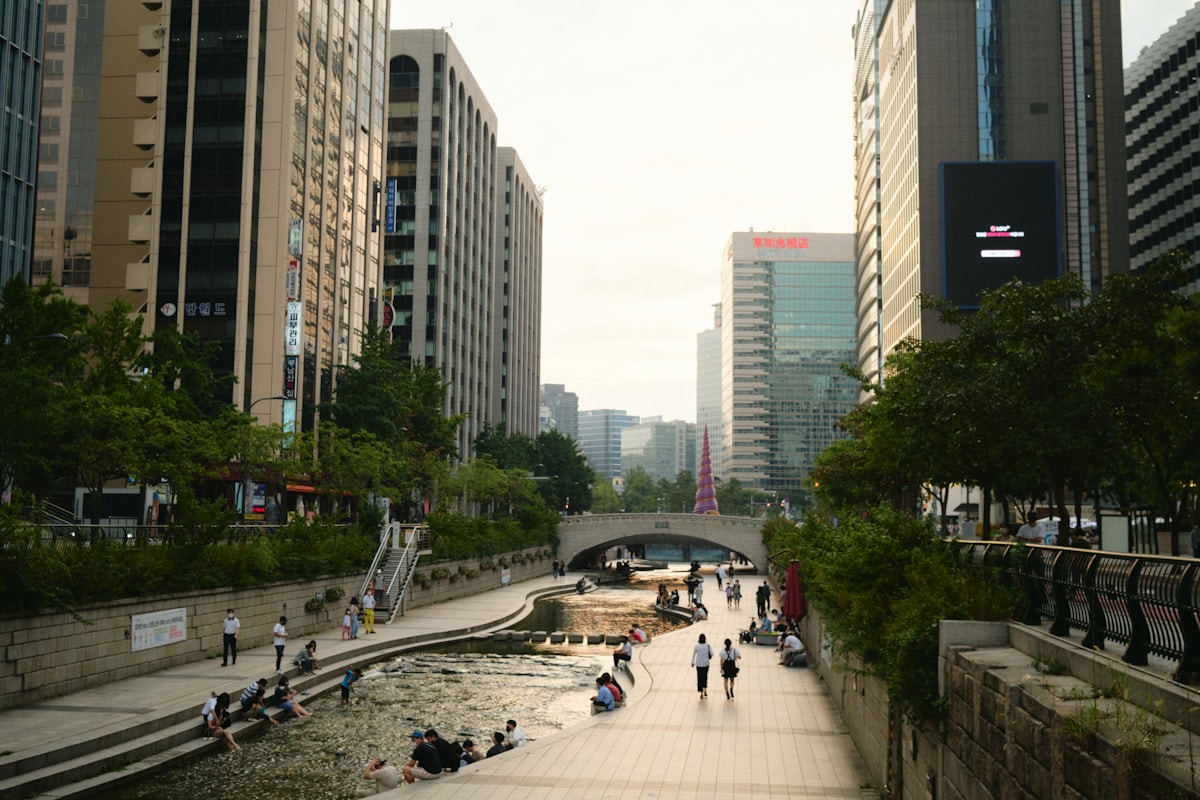
Travelers can markedly reduce their expenses in Seoul by purchasing T-money cards or Seoul City Passes for unlimited public transportation access.
Seoul offers numerous free attractions, including Bukchon Hanok Village, Cheonggyecheon Stream, and many palace grounds on designated days.
Budget-conscious visitors should explore street food markets and local eateries serving affordable yet authentic Korean cuisine like kimbap, tteokbokki, and budae jjigae.
1. Public Transport Passes and Discount Cards
Several transportation passes in Seoul can dramatically reduce travel costs while offering convenience for tourists exploring the city.
- T-Money card: rechargeable and usable across all public transport
- Seoul City Pass: includes unlimited subway/bus rides plus attraction discounts
- Discover Seoul Pass: free entry to major attractions plus transportation
- KORAIL Pass: ideal for travelers planning intercity train journeys for day trip from Seoul
- Airport Railroad Express (AREX) tickets: discounted airport transfers
2. Free Attractions and Budget-Friendly Dining
Countless free attractions and affordable dining options make Seoul accessible even to travelers on tight budgets.
Visitors can explore palatial grounds at Gyeongbokgung Palace on designated free days, hike scenic urban mountains, or wander through traditional markets without spending a dime.
For meals, street food stalls and kimbap restaurants offer authentic Korean flavors starting at just ₩1,000.
Where to Stay in Seoul for First-Time Visitors
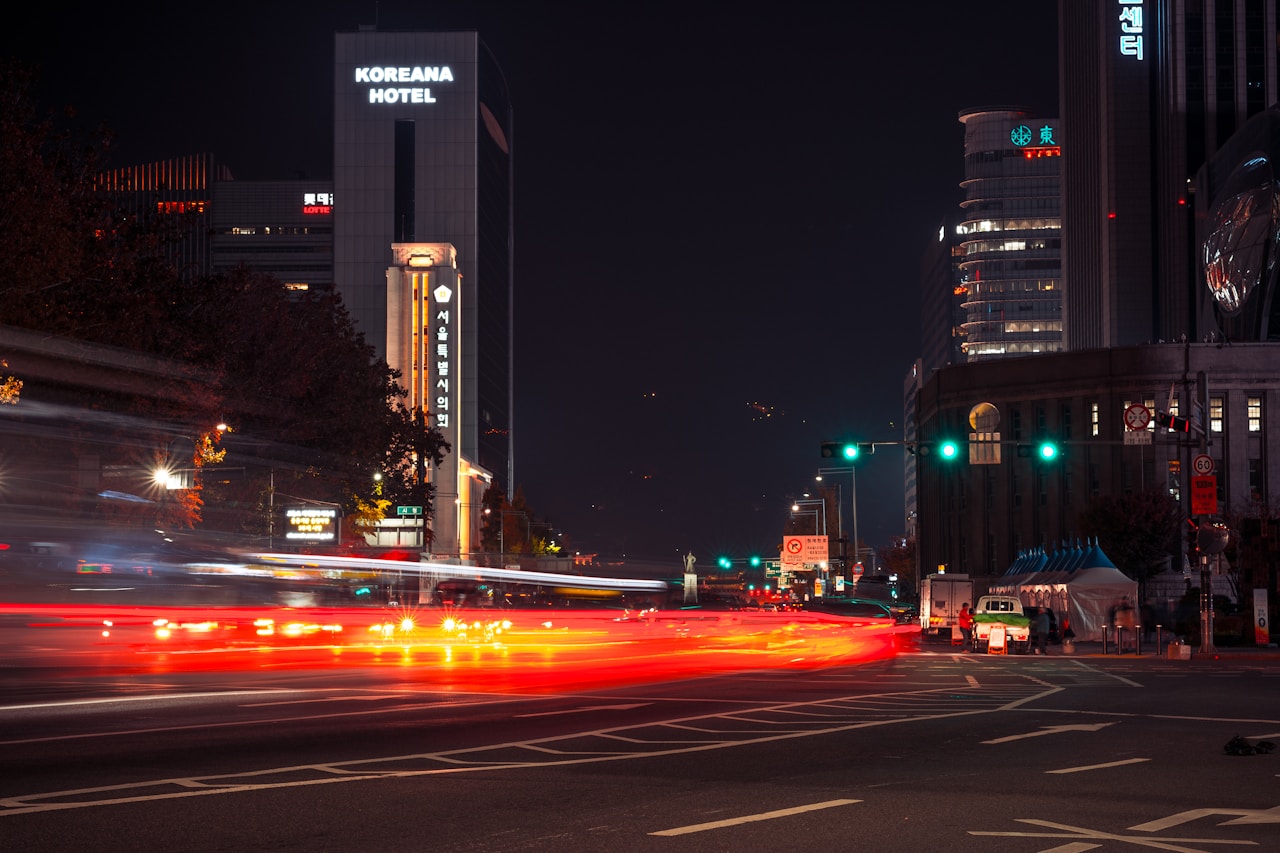
Selecting the right accommodation in Seoul hinges on proximity to major attractions and public transportation hubs, with Myeongdong, Hongdae, and Gangnam offering excellent starting points for first-time visitors.
Travelers can choose between international hotel chains that provide familiar comforts or authentic Korean guesthouses (hanoks) that immerse guests in traditional culture.
Budget-conscious visitors should book well in advance, particularly during cherry blossom season or major festivals, to secure the best rates and locations.
Best Areas to Stay for Convenience and Attractions
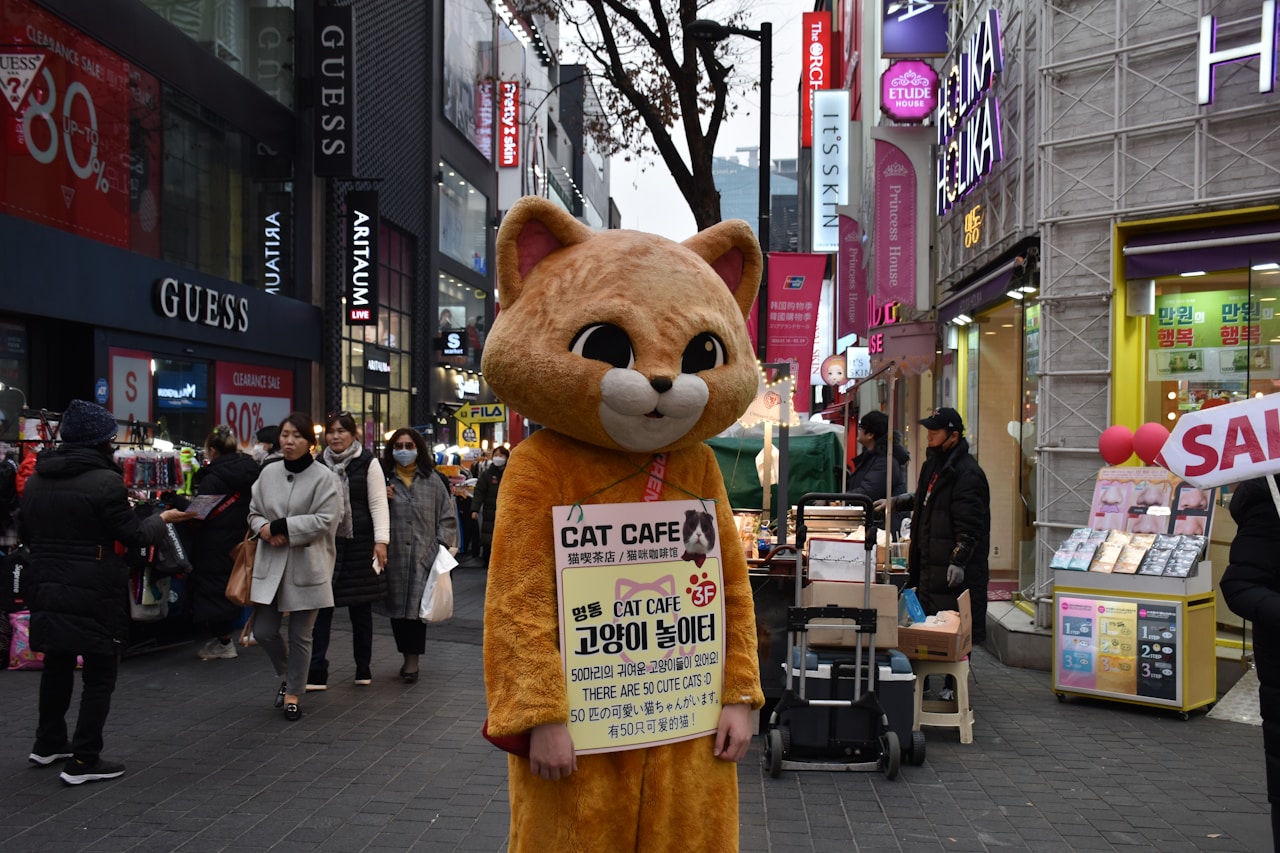
First-time visitors to Seoul should consider three key districts when choosing where to stay.
Myeong-dong offers world-class shopping and street food in a central location, while Hongdae pulses with lively nightlife and artistic university culture.
For those seeking a traditional Korean experience, Insadong’s narrow alleyways showcase historical architecture, tea houses, and authentic craft shops.
1. Myeong-dong for Shopping and Food
A shopping paradise situated in the heart of Seoul, Myeong-dong stands as the ultimate destination for visitors seeking retail therapy and culinary adventures.
- Bustling streets lined with local and international brands
- Street food stalls offering authentic Korean snacks
- Countless beauty stores with Korean skincare products
- Duty-free shopping opportunities for international visitors
- Night markets that illuminate the district after sunset
2. Hongdae for Nightlife and Youth Culture
Why do so many young travelers gravitate to Hongdae?
This lively university district pulses with creative energy, offering Seoul’s most dynamic nightlife scene. Streets filled with live music venues, dance clubs, and quirky cafés stay lively until dawn.
Street performers entertain crowds while indie boutiques showcase emerging designers.
Hongdae embodies Seoul’s youth culture, providing authentic experiences for those seeking urban adventure.
3. Insadong for a Traditional Korean Experience
While Hongdae showcases Seoul’s lively youth culture, Insadong offers travelers an immersion into traditional Korean heritage.
Visitors explore this cultural gem through:
- Antique shops selling centuries-old treasures
- Traditional tea houses serving authentic Korean brews
- Hanbok rental shops for cultural photo opportunities
- Art galleries featuring both classic and contemporary Korean works
- Street food vendors offering traditional Korean delicacies
Booking Accommodation: Hotels vs Guesthouses
Seoul offers accommodation options across every price point, from budget-friendly guesthouses to luxurious five-star hotels in the heart of Gangnam.
First-time visitors should consider factors such as proximity to public transportation, neighborhood safety, and access to key attractions when selecting their accommodations.
Many travelers find that mid-range boutique hotels provide an ideal balance of comfort, convenience, and authentic Korean hospitality without breaking the bank.
1. Budget, Mid-Range, and Luxury Options
When planning a visit to South Korea’s lively capital, travelers must consider their accommodation budget carefully, as Seoul offers lodging options across all price points.
- Budget hostels and guesthouses ($20-40/night) flourish in Hongdae.
- Mid-range hotels ($80-150/night) concentrate around Myeongdong.
- Luxury accommodations ($200+/night) dominate Gangnam.
- Traditional hanok stays offer cultural immersion in Bukchon.
- Long-term serviced apartments available for extended visits.
2. Tips for Choosing the Right Place to Stay
First-time visitors to Seoul face an essential decision that can greatly impact their experience: where to stay in this sprawling metropolis of 25 million people.
Most travelers choose between centrally located neighborhoods like Myeongdong, Hongdae, or Gangnam, based on proximity to attractions and subway access.
Hotels provide comfort and services, while guesthouses offer cultural immersion and budget-friendly options, often including local insights from hosts.
Transportation Tips for Traveling to Seoul
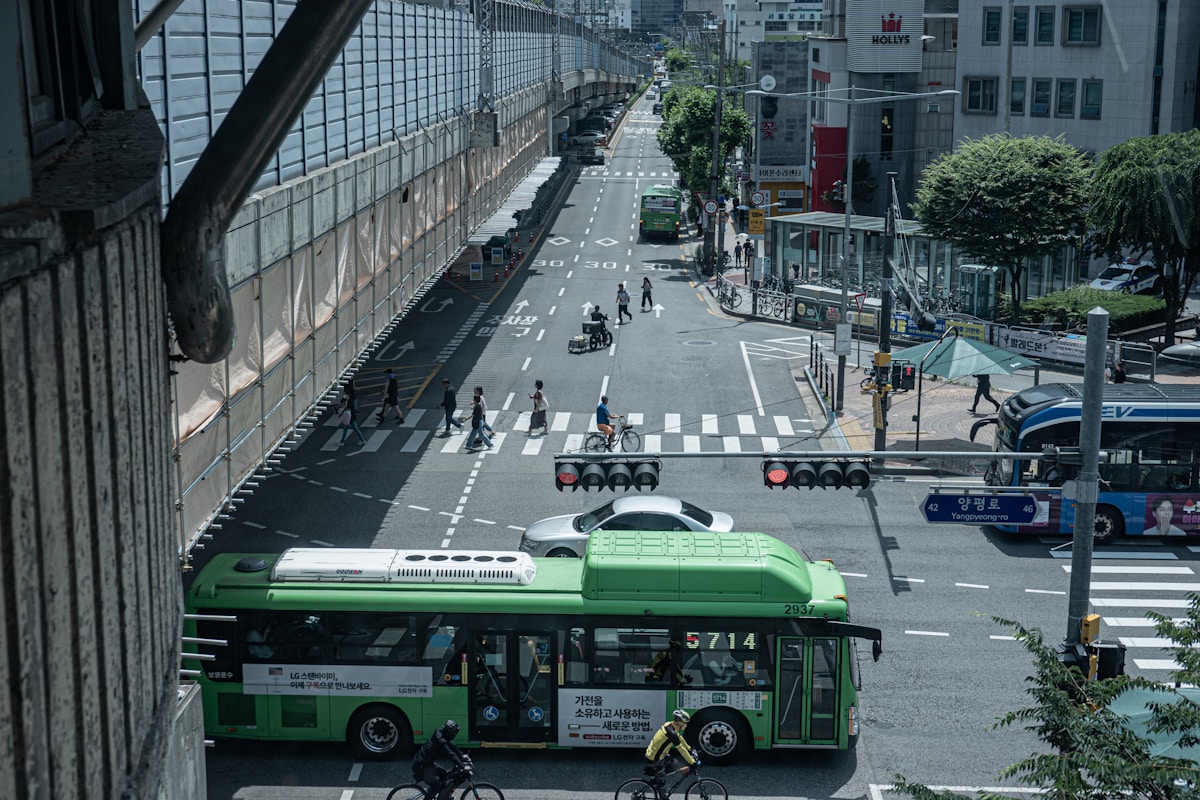
Transportation in Seoul offers visitors multiple efficient options for traversing this sprawling metropolis.
Travelers can easily reach the city center from Incheon or Gimpo airports via dedicated express trains, airport limousine buses, or taxis with clearly marked rates.
Within the city, Seoul’s extensive network of subway lines and buses provides convenient access to major attractions, while the pedestrian-friendly downtown areas and growing bike-sharing program allow for more intimate exploration.
Getting From the Airport to the City
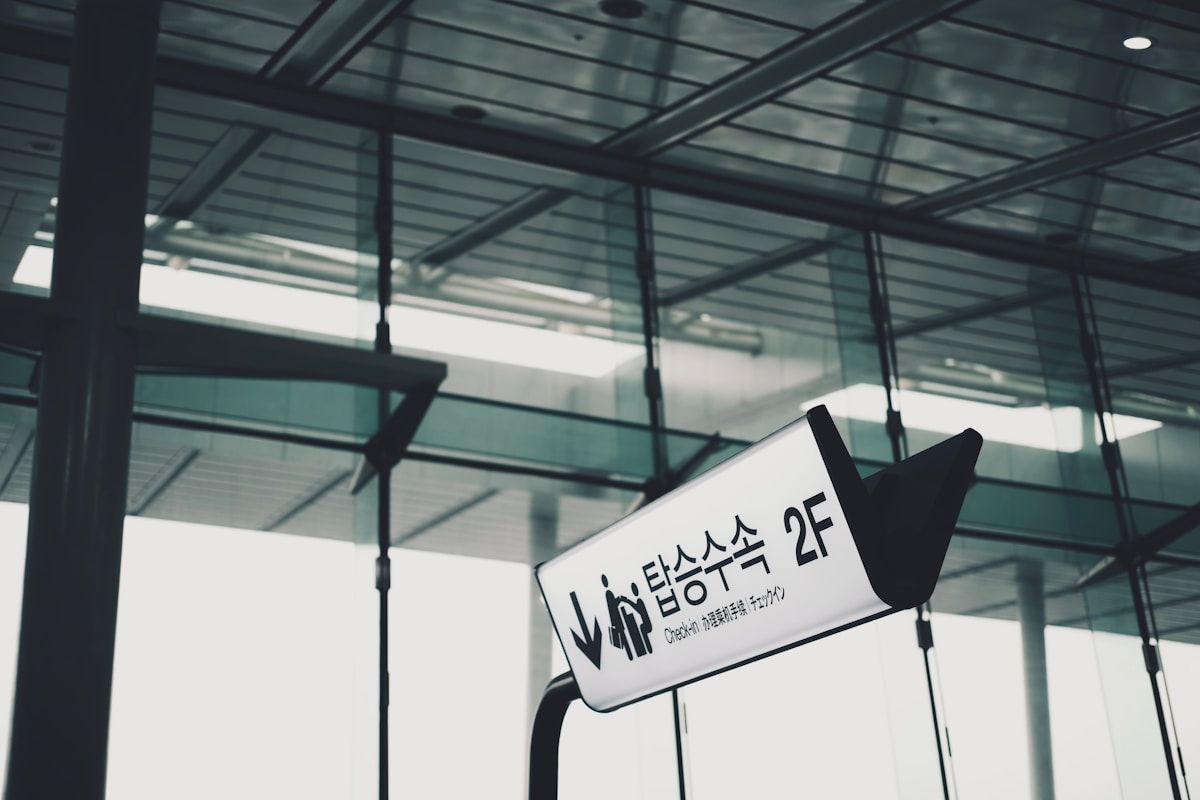
Travelers arriving at Seoul’s Incheon Airport have several efficient options to reach the city center.
The AREX train offers a swift, traffic-free journey with both express and all-stop services, while airport buses provide convenient routes to specific neighborhoods and hotels.
For those preferring door-to-door convenience, taxis and pre-arranged private transfers are readily available, though at premium prices compared to public transportation.
1. Taking the AREX Train vs Airport Buses
When landing at Incheon International Airport, visitors to Seoul face an important choice for their journey into the city: the efficient AREX train system or the extensive network of airport buses.
- AREX trains reach Seoul Station in just 43 minutes
- Airport buses stop at major hotels and neighborhoods
- Trains avoid unpredictable traffic congestion
- Buses offer door-to-door convenience for many destinations
- Both options provide multilingual signage and announcements
2. Taxi and Private Transfer Options
Weary tourists with luggage in tow might prefer the convenience of direct transportation from Incheon International Airport to their final destination.
Seoul offers both standard taxis (around ₩60,000-₩100,000) and deluxe black taxis for premium service.
Pre-arranged private transfers provide fixed rates, English-speaking drivers, and the comfort of avoiding taxi queues, particularly valuable for late-night arrivals when public transportation options are limited.
Using Public Transport in Seoul
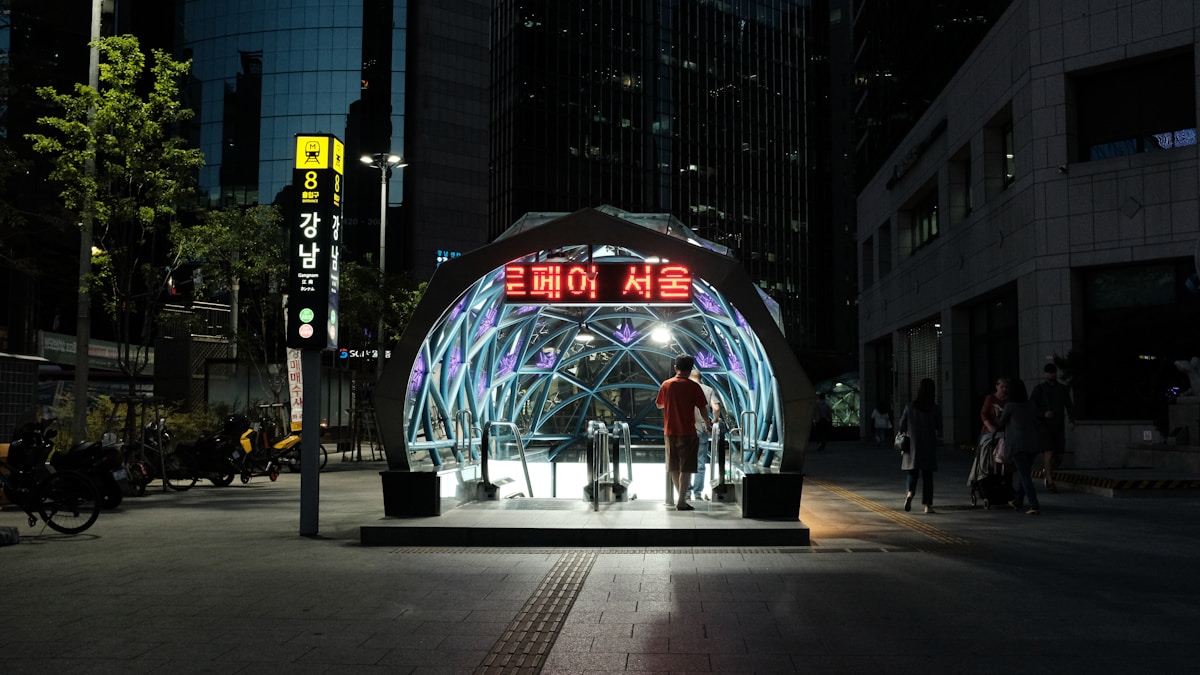
Seoul’s extensive public transportation system includes a color-coded subway network, thorough bus services, and readily available taxis, offering travelers efficient ways to navigate the city.
The T-Money card provides seamless cashless travel across all transport types, allowing passengers to simply tap and go without fumbling for cash.
Understanding basic how to get around with understanding a subway line colors, bus categories, and taxi etiquette equips visitors with the confidence to explore Seoul’s diverse neighborhoods with ease.
1. How to Use the Subway, Buses, and Taxis
Traversing Seoul’s extensive public transportation network is surprisingly straightforward once travelers understand the basics.
- T-Money cards provide seamless payment across all transit modes.
- Subway announcements come in four languages, including English.
- Green buses operate locally; blue buses traverse longer routes.
- Taxis display availability with roof lights, red means occupied.
- Most transportation operates between 5:30am and midnight daily.
2. Getting a T-Money Card for Cashless Travel
A T-Money card stands as the foundation of convenient travel throughout Seoul.
Available at convenience stores and subway stations for 4,000 won, this rechargeable card eliminates fumbling for cash when boarding buses or trains.
The card offers discounted transfers between transit modes within 30 minutes and works seamlessly for taxis, convenience store purchases, and even vending machines.
Walking and Biking in the City
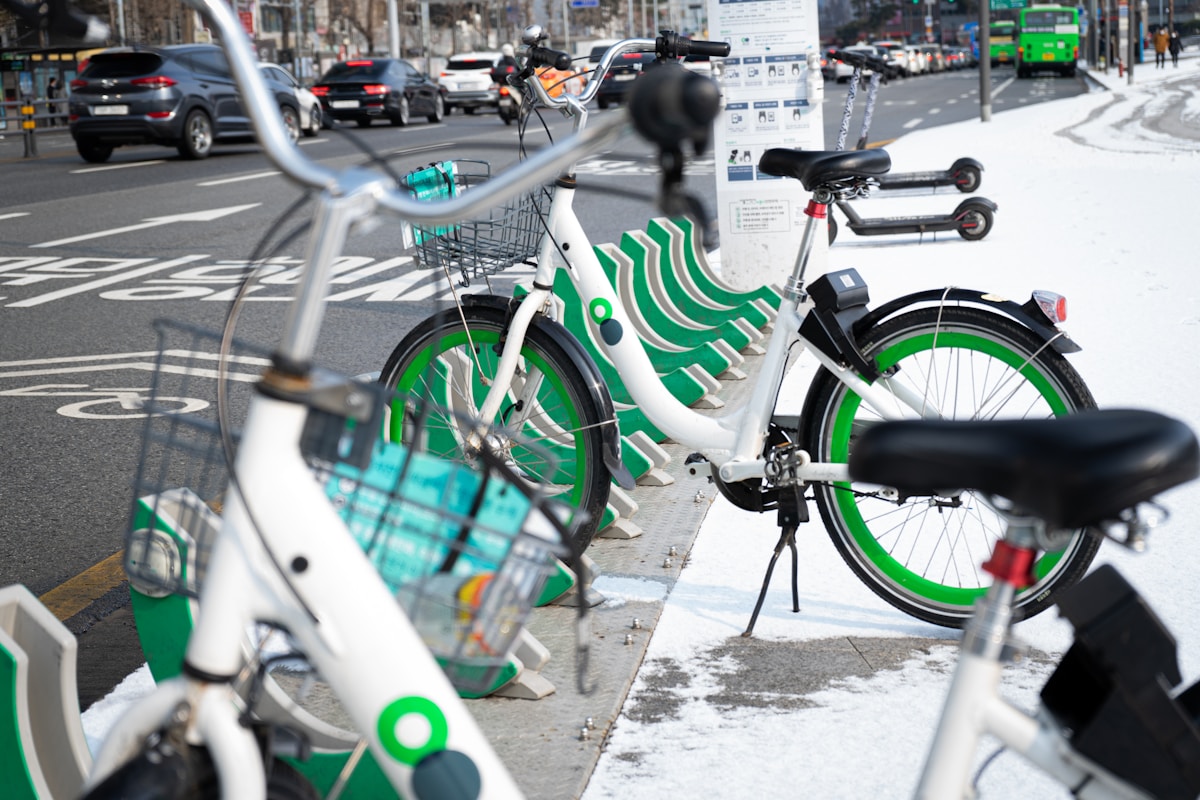
Seoul offers excellent walkability in certain districts like Myeongdong and Insadong, where pedestrian-friendly streets showcase the city’s lively culture and shopping opportunities.
Visitors seeking two-wheeled exploration can rent bicycles through the Ttareungyi bike-sharing system or from numerous rental shops near the Han River’s scenic pathways.
For the most picturesque cycling experience, the Han River bike trail spans over 80 kilometers, connecting major landmarks and providing breathtaking views of Seoul’s skyline.
Is Seoul a Walkable City?
How does one navigate Seoul’s expansive urban landscape on foot?
Seoul offers highly walkable neighborhoods, particularly in central districts like Myeongdong and Hongdae, balanced with challenging hillside areas.
- Wide, well-maintained sidewalks in downtown areas
- Extensive pedestrian-only zones and street markets
- Detailed subway system connects walkable districts
- Pedestrian-friendly riverside paths along Han River
- Strategic street crossing requires attention to traffic patterns
Where to Rent Bikes for Scenic Routes
Beyond walking, cycling offers visitors another immersive way to explore Seoul’s diverse landscape.
Bike rental stations dot the Han River parks, with Seoul Bike (Ttareungyi) offering convenient hourly rates.
The Hangang Bicycle Path provides 40km of scenic routes alongside the water.
Rental locations include Yeouido Park, Ttukseom Resort, and Banpo Hangang Park, all requiring simple ID verification.
Essential Seoul Travel Tips for First-Time Visitors
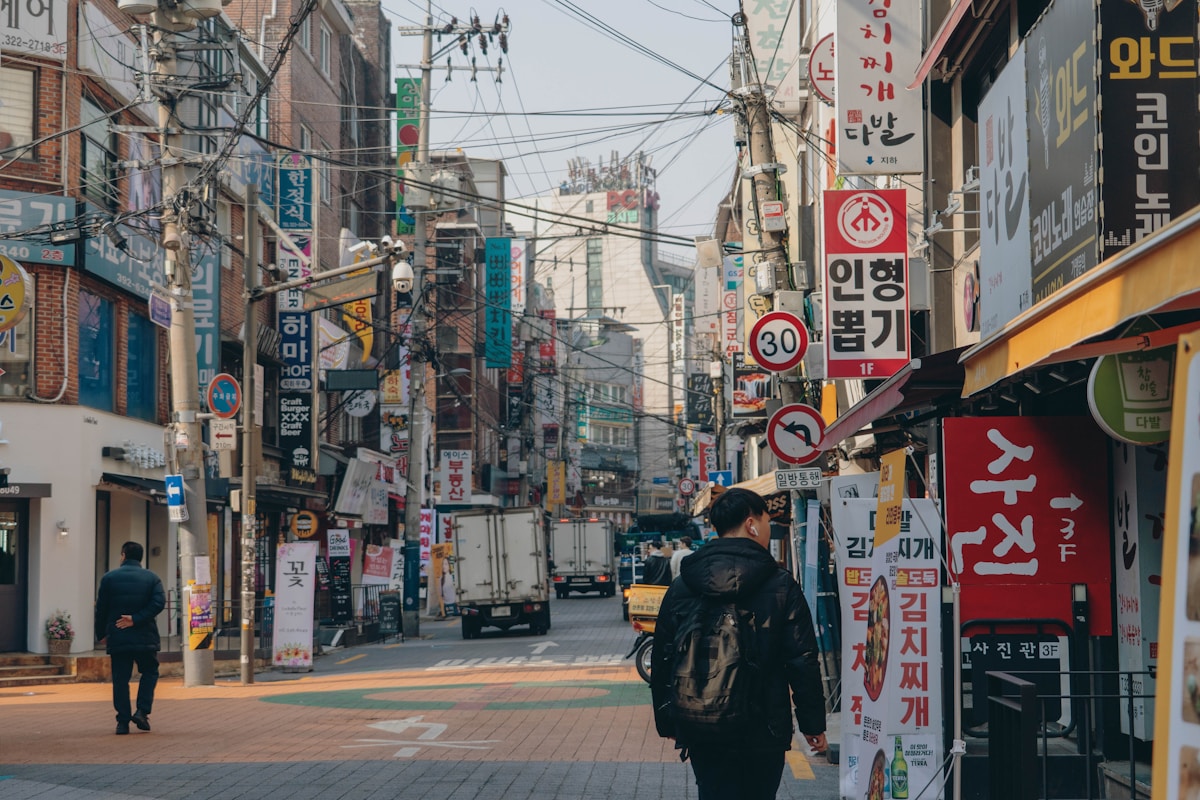
First-time visitors to Seoul should follow a guide for specific challenges beyond the typical tourist concerns.
Understanding internet connectivity options, managing language barriers, and respecting local customs will greatly enhance the travel experience.
These essential adaptation points often determine whether travelers merely survive their Seoul adventure or truly thrive in this dynamic metropolis.
Internet and Connectivity
Seoul offers excellent connectivity options with easily accessible SIM cards and pocket WiFi rentals at Incheon Airport and throughout the city.
Visitors can purchase prepaid data plans from major carriers including SK Telecom, KT, and LG U+ for seamless navigation and communication during their stay.
The city also boasts extensive free WiFi coverage in public spaces, subway stations, tourist attractions, and most cafés, ensuring travelers remain connected while exploring.
1. Getting a SIM Card or Pocket WiFi in Seoul
Staying connected while traveling in South Korea is essential for traversing the city, translating Korean, and sharing experiences with friends and family back home.
- SIM cards available at Incheon Airport from KT, SK, and LG
- Pocket WiFi rentals offer unlimited data for multiple devices
- Pre-booking online often provides discounts and faster pickup
- Convenience stores like 7-Eleven sell prepaid data SIMs
- Most options require passport identification for purchase
2. Free WiFi Hotspots Throughout the City
Wondering how to stay connected without purchasing a local SIM card?
Seoul offers extensive free WiFi coverage throughout the city. Travelers can access the “Seoul Free WiFi” network in popular tourist areas, subway stations, public parks, and major shopping districts.
Look for the official WiFi signs or open your device’s WiFi settings to discover available networks, no registration required for most public hotspots.
Language Barrier and Communication
Visitors to Seoul often encounter language barriers as Korean uses a unique alphabet system called Hangul.
Learning basic phrases like “annyeonghaseyo” (hello), “kamsahamnida” (thank you), and “eodi-isseumnikka?” (where is?) can greatly enhance the travel experience.
Modern translation apps such as Papago and Google Translate offer practical solutions for more complex conversations, with Papago being particularly effective for Korean-specific translations.
1. Common Korean Phrases for Tourists
While traveling in Seoul, knowing a few basic Korean phrases can greatly enhance the experience and help tourists navigate language barriers with greater confidence.
- “Annyeong haseyo” (Hello/Good day)
- “Kamsahamnida” (Thank you)
- “Juseyo” (Please give me)
- “Eodi-eyo?” (Where is?)
- “Eolmayeyo?” (How much is it?)
2. Using Translation Apps for Easy Conversations
Several reliable translation apps serve as digital companions for travelers exploring Seoul’s language landscape.
Papago excels with Korean-specific nuances while Google Translate offers offline functionality for subway journeys.
Naver Dictionary provides contextual translations of menus and signs.
For authentic conversations, these tools bridge communication gaps without restricting spontaneous interactions with locals in Seoul’s lively neighborhoods.
Local Customs and Etiquette
Understanding Seoul’s social etiquette is essential for respectful interaction, particularly showing deference to elders through proper bowing and offering seats on public transportation.
Visitors should note that loud behavior in public spaces may draw disapproving glances, as Koreans generally value quietness and restraint in public settings.
Unlike Western countries, tipping is not customary in Seoul’s restaurants and taxis, and service workers might even refuse tips if offered.
1. Respecting Elders and Public Behavior
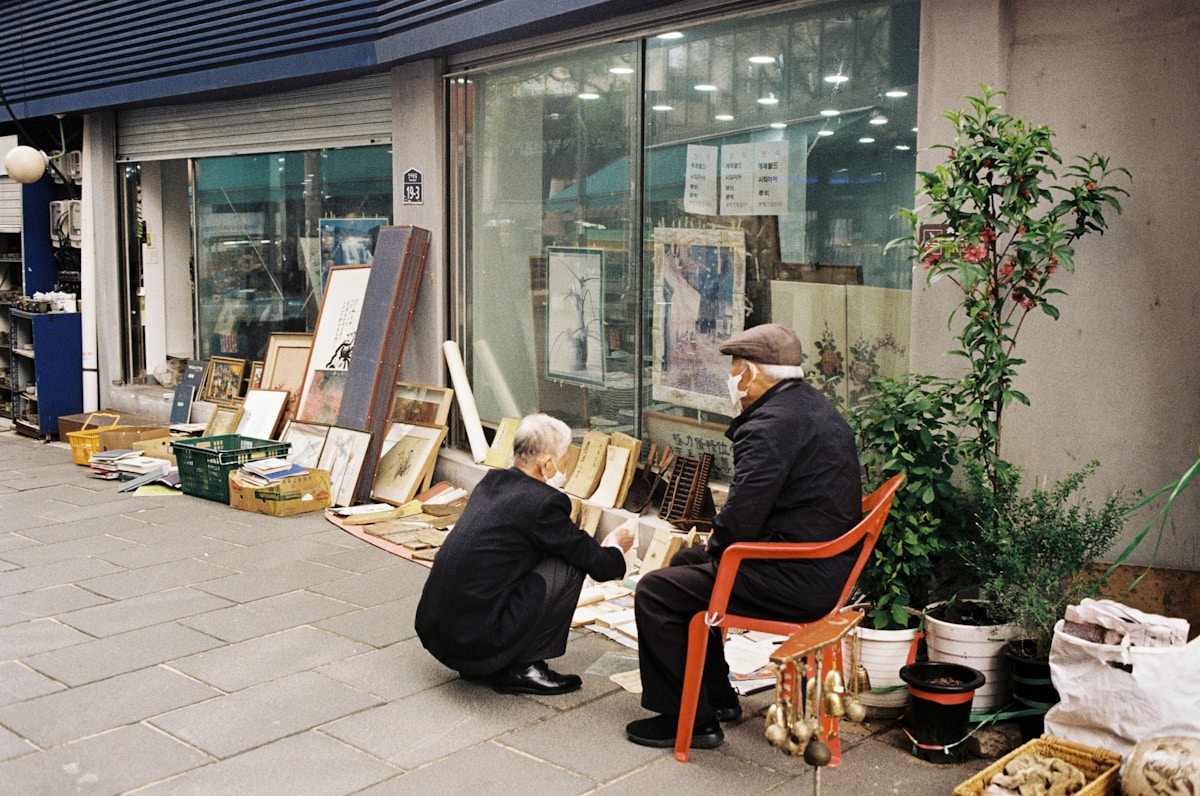
In South Korean culture, respect for elders forms the cornerstone of social interactions that visitors must navigate carefully.
- Use both hands when giving or receiving items from elders.
- Bow slightly when greeting older Koreans.
- Avoid public displays of affection.
- Maintain quiet behavior on public transportation.
- Remove shoes before entering homes and certain restaurants.
2. Tipping Culture in Restaurants and Taxis
Most visitors to Seoul will find the tipping culture dramatically different from Western countries, as gratuities are generally not expected or sometimes even refused.
Restaurant bills already include service charges, and taxi drivers routinely return change without expecting tips.
This no-tipping norm extends to hotels and other services, allowing travelers to enjoy Korean hospitality without calculating appropriate gratuities.
What to Eat and Where to Dine in Seoul
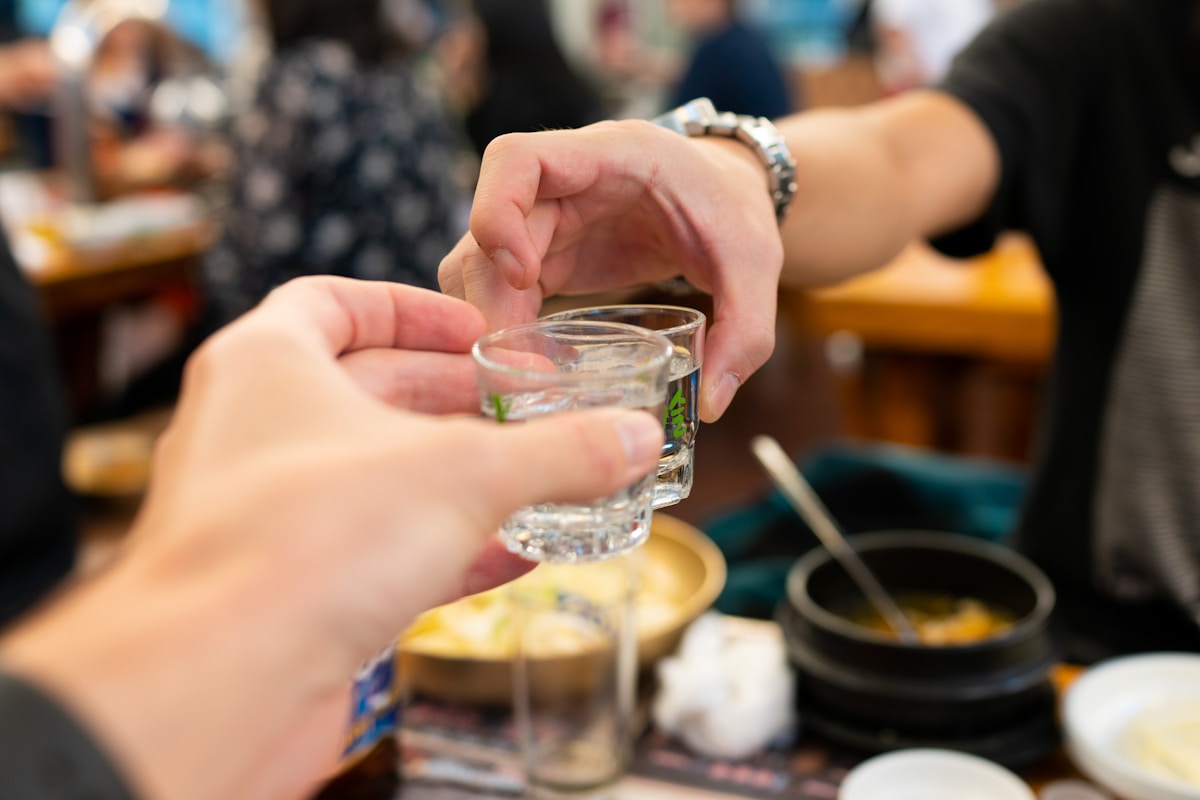
Seoul’s culinary landscape offers travelers an unforgettable feast of authentic Korean flavors, from spicy kimchi and savory bulgogi to comforting bibimbap.
Food enthusiasts should explore bustling markets like Gwangjang and Namdaemun, where local vendors serve traditional street foods at modest prices.
For a more immersive dining experience, visitors can enjoy barbecue at traditional Korean restaurants where meats are grilled at the table or sample royal court cuisine that showcases Korea’s culinary heritage.
Must-Try Korean Dishes During Your Trip
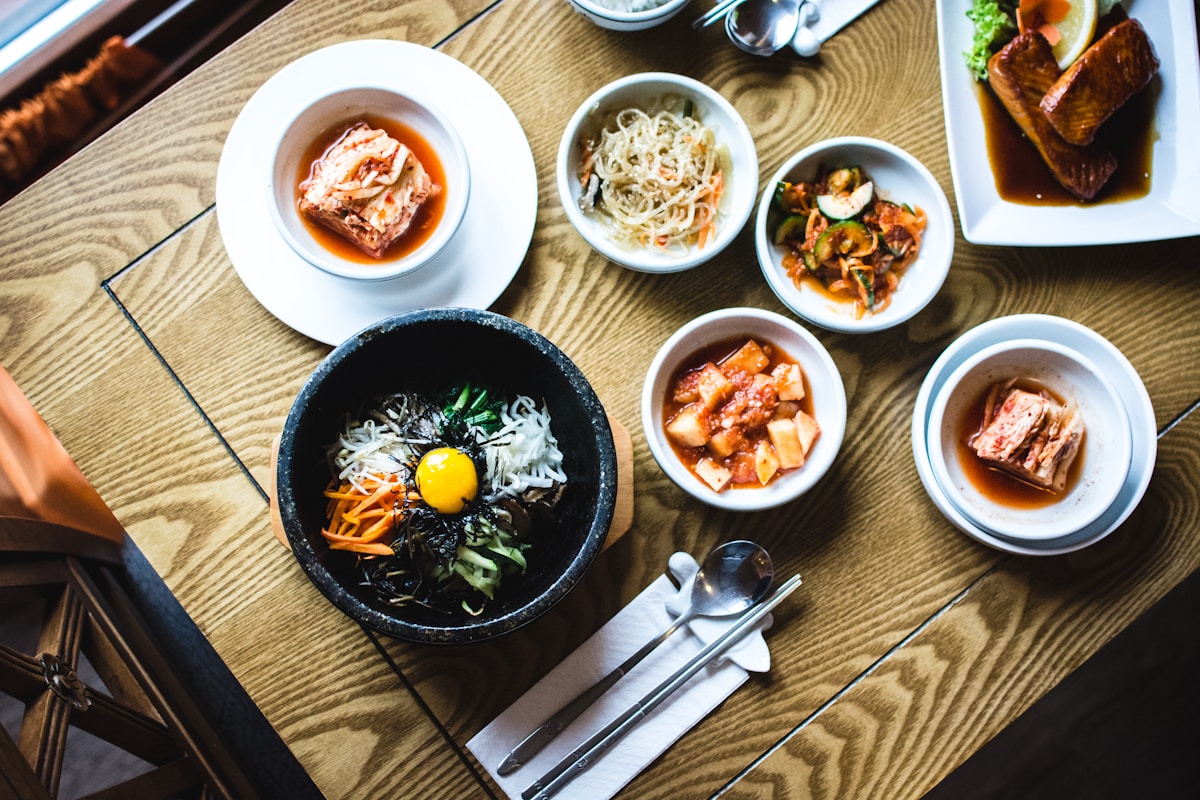
Seoul’s culinary landscape offers visitors a tantalizing array of must-try dishes, including sizzling Korean BBQ where diners grill marinated meats at their tables, and colorful bibimbap served in hot stone bowls.
Food enthusiasts shouldn’t miss the bustling street food stalls in areas like Myeongdong and Gwangjang Market, where local specialties such as tteokbokki (spicy rice cakes) and hotteok (sweet pancakes) tempt passersby.
For the most authentic dining experiences, head to Hongdae for trendy eateries or Jongno for traditional establishments where generations of Seoulites have savored these iconic Korean flavors.
1. Korean BBQ, Bibimbap, and Street Food
When exploring Seoul, no culinary experience rivals the sizzling excitement of Korean BBQ, the colorful presentation of bibimbap, or the bustling energy of street food markets.
- Samgyeopsal (pork belly) represents Korean BBQ’s finest tradition.
- Bibimbap offers a customizable rice bowl with seasonal vegetables.
- Hotteok pancakes satisfy sweet cravings with brown sugar filling.
- Tteokbokki delivers spicy rice cakes perfect for street snacking.
- Pojangmacha tents provide authentic late-night dining experiences.
2. Where to Find the Best Local Specialties
Discovering where to find Seoul’s culinary treasures requires insider knowledge that transforms an ordinary trip into a gastronomic adventure.
Locals recommend Gwangjang Market for authentic bindaetteok and mung bean pancakes, while Myeongdong’s street vendors offer exceptional tteokbokki.
For premium Korean BBQ, visit Majang Meat Market or upscale restaurants in Apgujeong. Hongdae cafés showcase innovative Korean desserts with modern twists.
Food Markets and Traditional Dining Experiences
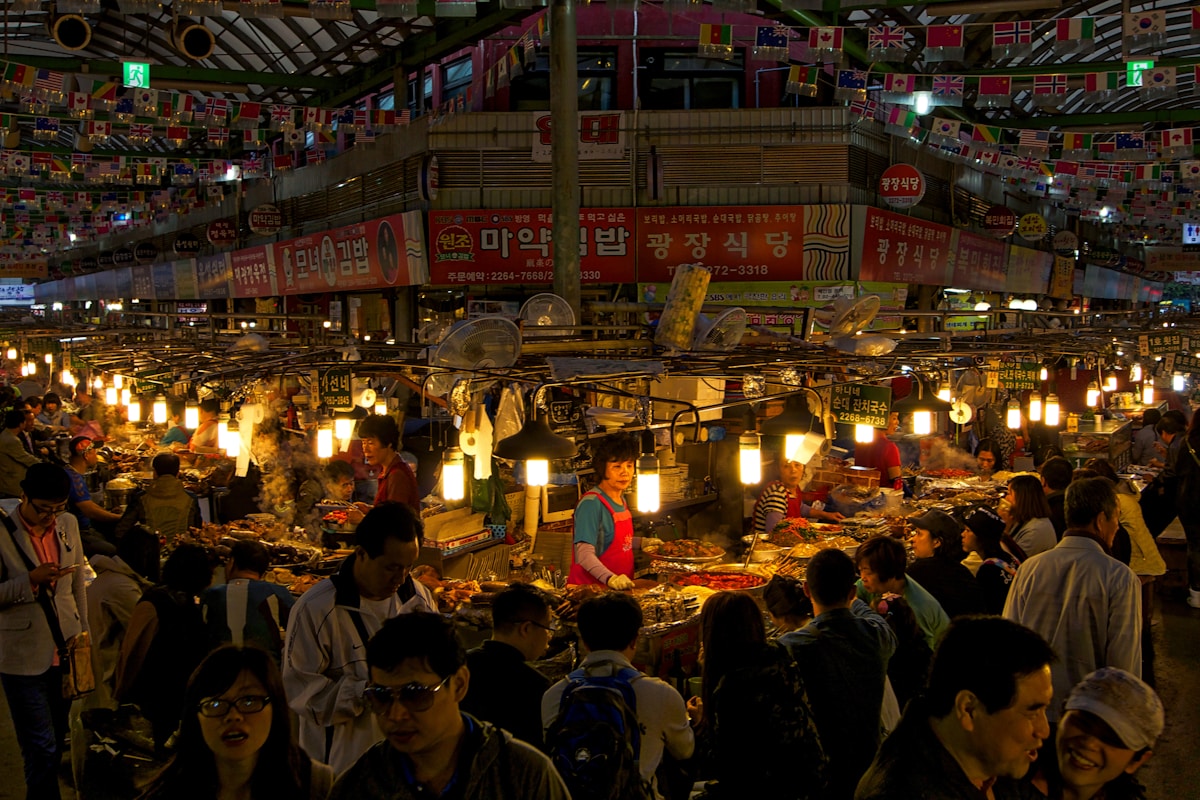
Seoul’s bustling Gwangjang Market offers visitors an authentic Korean street food experience, with hundreds of stalls serving everything from bindaetteok (mung bean pancakes) to yukhoe (raw beef tartare).
For a more refined culinary journey, travelers can seek out traditional hanok restaurants, often housed in beautifully preserved historical buildings with courtyard gardens.
These atmospheric dining venues provide not only exquisite Korean cuisine but also a glimpse into Korea’s architectural heritage and dining customs.
1. Visiting Gwangjang Market for Authentic Street Food
No visit to Seoul would be complete without exploring Gwangjang Market, one of the city’s oldest and most bustling food destinations.
This lively marketplace offers authentic street food experiences that showcase Korea’s culinary heritage.
- Try bindaetteok (mung bean pancakes) from vendors with the longest lines
- Sample yukhoe (raw beef tartare) prepared fresh before your eyes
- Feast on handmade mandu (dumplings) steaming hot from the pan
- Enjoy piping hot odeng (fish cake skewers) in savory broth
- Finish with hotteok (sweet filled pancakes) for a traditional dessert
2. Dining at a Traditional Hanok Restaurant
For travelers seeking to elevate their Korean culinary experience beyond street food, traditional hanok restaurants offer an immersive journey into Korea’s gastronomic heritage.
These establishments, housed in restored traditional Korean homes, serve royal court cuisine and regional specialties.
Visitors typically remove their shoes before dining on floor cushions, enjoying multi-course meals featuring seasonal ingredients, fermented delicacies, and perfectly balanced flavors.
Best Attractions and Activities for a Vacation in Seoul
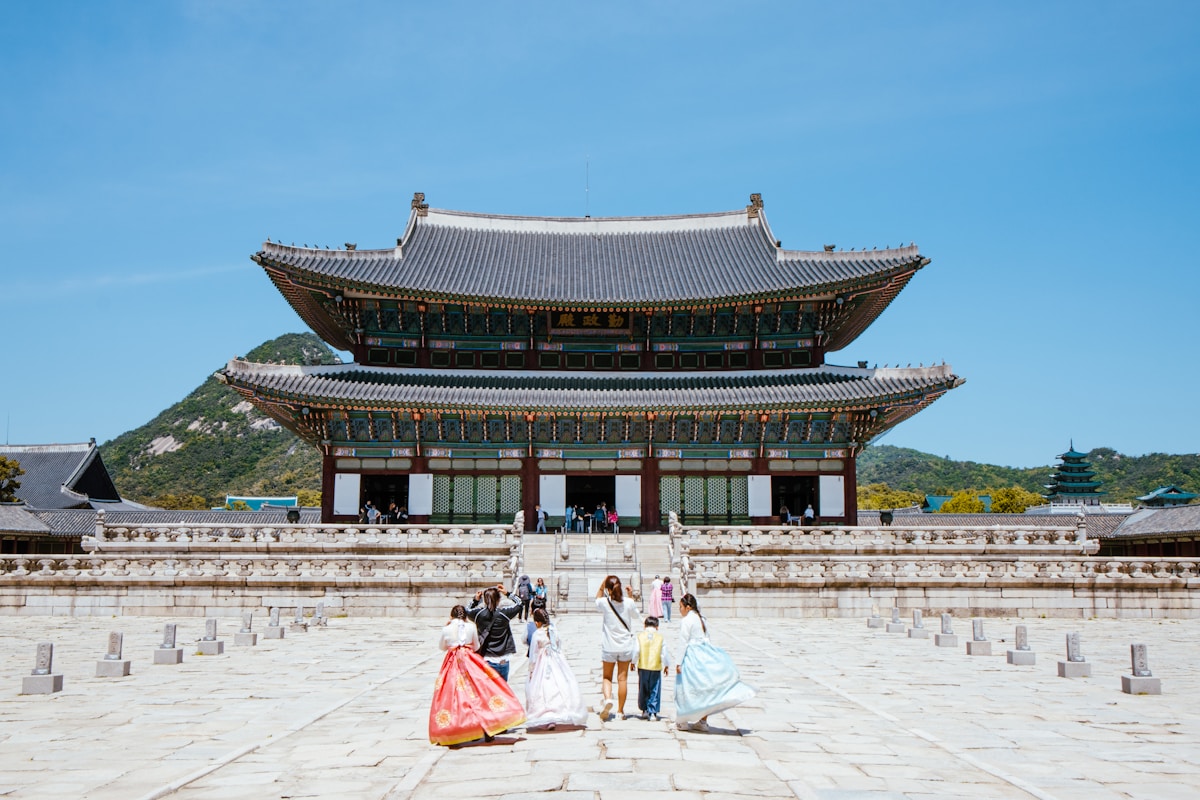
Seoul boasts an impressive array of historical landmarks, from the majestic Gyeongbokgung Palace to the serene Bukchon Hanok Village where traditional Korean architecture remains preserved.
Visitors seeking unique experiences can participate in a traditional Korean cooking class or don hanbok attire while exploring the city’s ancient royal grounds.
Beyond the well-trodden tourist paths, Seoul offers memorable activities like relaxing in dragon-themed jjimjilbang spas or experiencing the lively nightlife in districts such as Hongdae and Itaewon.
Must-See Landmarks and Historical Sites
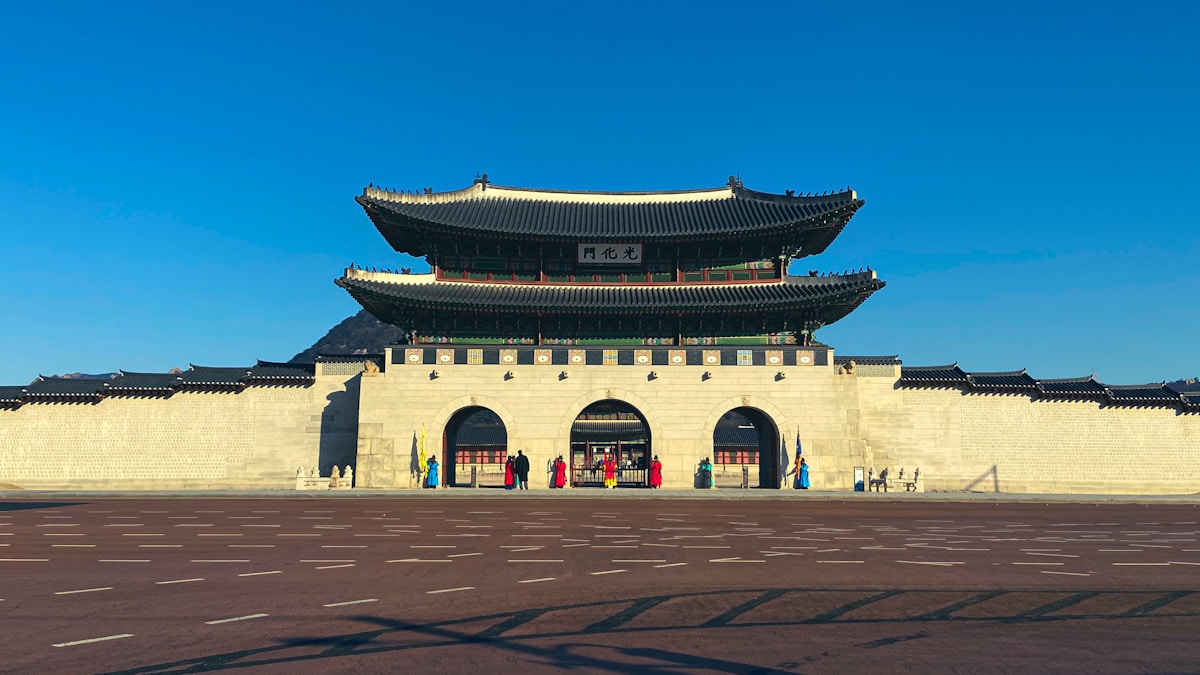
No trip to Seoul is complete without visiting the magnificent Gyeongbokgung Palace and nearby Bukchon Hanok Village, where traditional Korean architecture stands preserved amid the modern metropolis.
The iconic N Seoul Tower offers panoramic views of the sprawling city from its perch atop Namsan Mountain.
Visitors seeking respite from urban exploration can enjoy the peaceful Han River Parks, where locals and tourists alike gather for cycling, picnics, and evening strolls along the waterfront.
1. Gyeongbokgung Palace and Bukchon Hanok Village
Magnificent and imposing, Gyeongbokgung Palace stands as the crown jewel of Seoul’s historical treasures.
The nearby Bukchon Hanok Village offers an authentic glimpse into traditional Korean living.
- Guard changing ceremony occurs daily at 10am and 2pm
- Free English tours available at both sites
- Photography permitted without tripods
- Rent hanbok attire for free palace admission
- Both locations accessible via Line 3 subway
2. N Seoul Tower and the Han River Parks
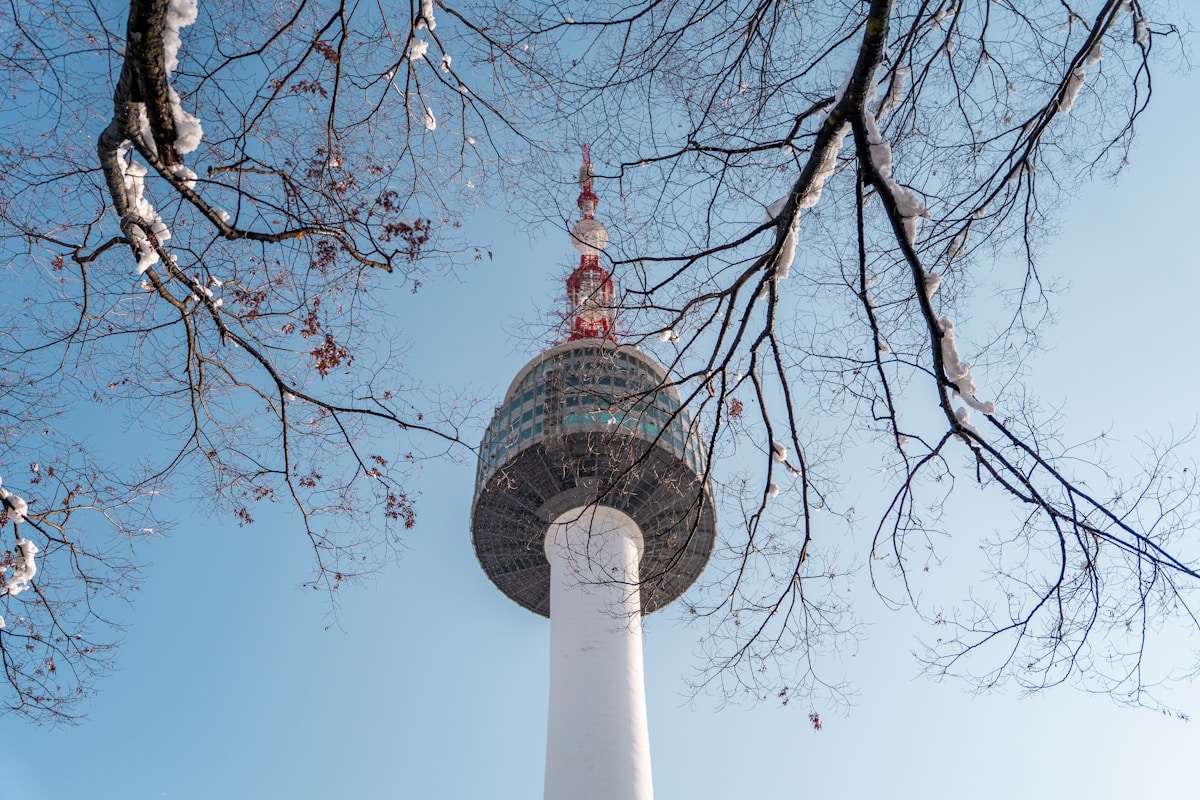
Rising majestically from Namsan Mountain, N Seoul Tower dominates the city skyline and offers visitors breathtaking 360-degree panoramic views of the sprawling metropolis below.
The tower features an observation deck, rotating restaurant, and love locks terrace.
Meanwhile, Han River parks provide serene escapes with cycling paths, picnic areas, and water activities, perfect for experiencing Seoul’s lively outdoor culture.
Unique Experiences for Travelers
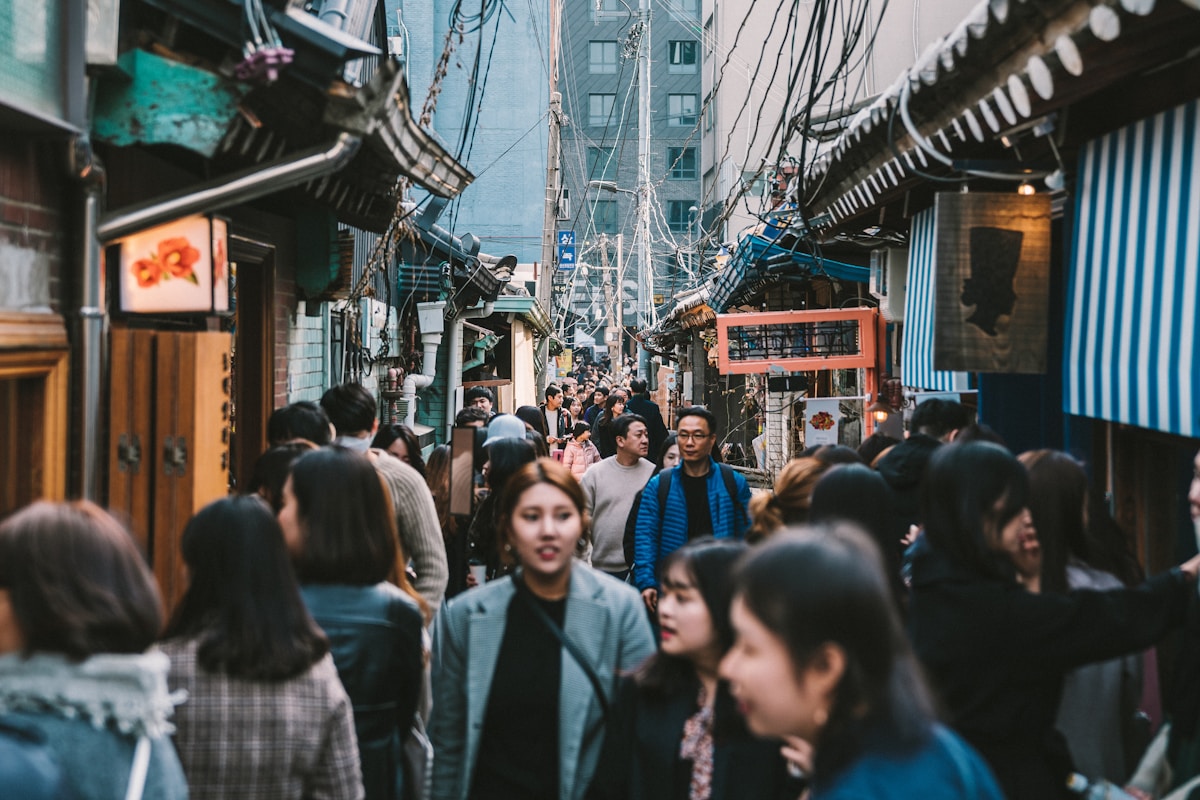
Visitors to Seoul can experience authentic Korean culture by spending a few hours at a jjimjilbang, a traditional Korean spa offering hot baths, saunas, and relaxation areas.
Myeong-dong presents a paradise for shoppers seeking cutting-edge K-beauty products and fashion items that have gained global popularity.
These distinctive experiences provide travelers with memorable insights into contemporary Korean lifestyle beyond typical tourist activities.
1. Visiting a Korean jjimjilbang (Spa)
Few cultural experiences in Seoul match the uniquely Korean tradition of jjimjilbang, large public bathhouses that offer far more than simple bathing.
- Separate gender-specific bathing areas with hot and cold pools
- Common relaxation spaces where families socialize
- Heated floors for sleeping (bring loose clothes)
- Various saunas with different therapeutic properties
- Food courts serving traditional Korean snacks and sikhye (sweet rice drink)
2. Shopping for K-Beauty and Fashion in Myeong-dong
After rejuvenating your body at a traditional jjimjilbang, Myeong-dong beckons as Seoul’s premier shopping district for those seeking to enhance their beauty regimen and wardrobe.
This bustling area boasts countless storefronts offering cutting-edge K-beauty products, from sheet masks to innovative skincare.
Fashion enthusiasts will discover trendy Korean brands alongside global retailers, all while street vendors serve delicious local snacks to fuel the shopping adventure.
Best Time to Visit Seoul and Weather Considerations
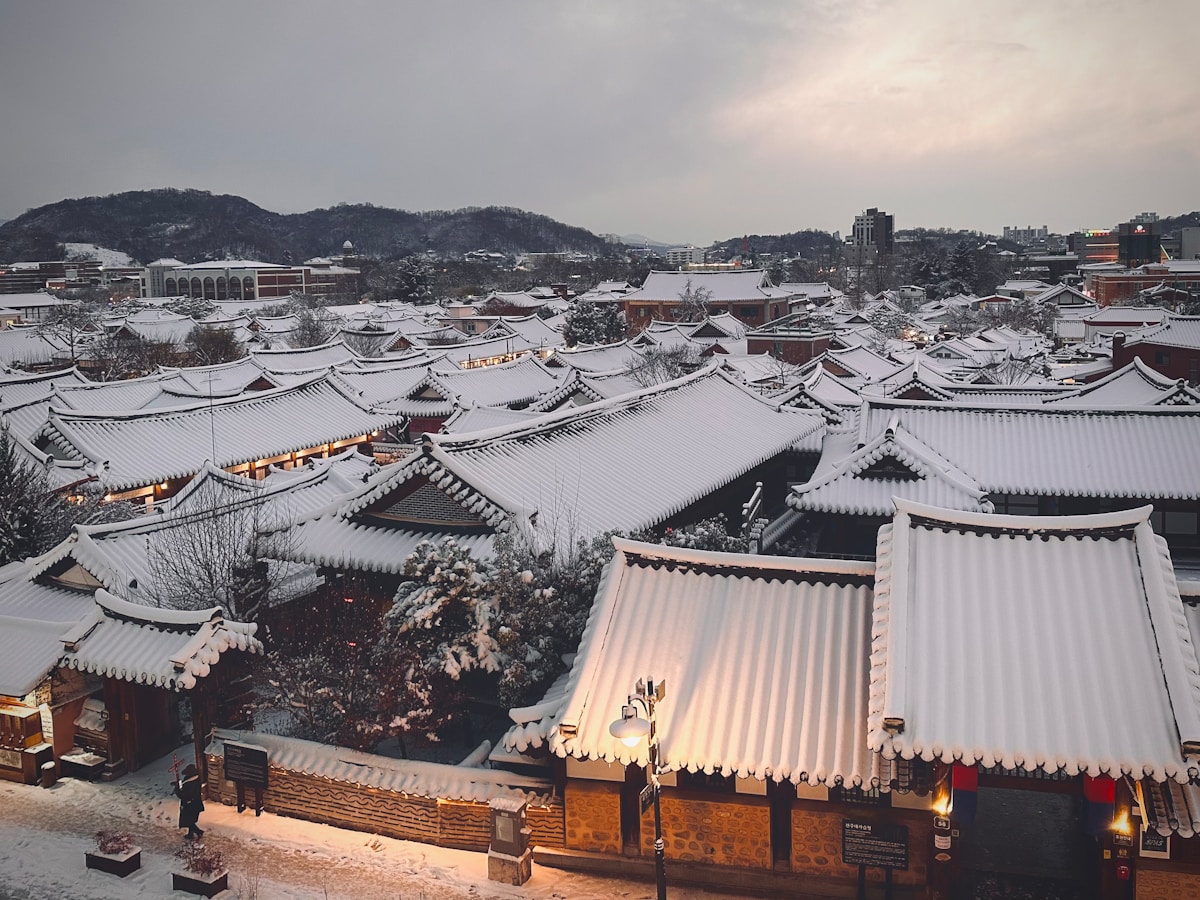
Seoul experiences four distinct seasons, each offering unique experiences for visitors planning their travel itinerary.
Spring brings cherry blossoms and mild temperatures, while summer can be hot and humid with occasional monsoon rains.
This is followed by autumn’s spectacular foliage, and winter’s freezing temperatures and potential snowfall.
Travelers should adjust their packing lists seasonally: lightweight clothing and rain gear for summer, layers for spring and fall, and heavy coats with thermal accessories for winter’s sub-zero conditions.
Seoul’s Four Seasons: What to Expect

Seoul transforms dramatically through its four distinct seasons, each offering unique experiences for visitors.
Spring brings the ethereal beauty of cherry blossoms painting the city pink, while autumn rewards travelers with spectacular crimson and golden foliage across mountainous parks.
Between these popular seasons, tourists encounter Seoul’s challenging summer humidity and winter’s pristine snowfall, both requiring specific preparations for comfort.
1. Spring Cherry Blossoms and Fall Foliage
Nature transforms Seoul into a spectacular display of colors twice a year, making spring and fall the most visually stunning seasons to experience the city.
- Cherry blossoms typically peak early April along Yeouido Park’s pathways.
- Namsan Park offers panoramic views amid autumn’s crimson canopy.
- Changdeokgung Palace gardens showcase traditional architecture against seasonal colors.
- Bukhansan National Park trails reveal dramatic mountain foliage.
- Local festivals celebrate each seasonal transformation.
2. Summer Heat and Winter Snow
Beyond the colorful blooms and foliage lies Seoul’s climate of extremes – scorching summers and frigid winters that dramatically reshape the urban experience.
Summer brings sweltering humidity with temperatures exceeding 35°C, while winter plunges below freezing with occasional snowfall transforming the cityscape.
Travelers should pack accordingly – breathable fabrics for July-August, and insulated layers with thermal accessories for December-February excursions.
Packing Tips Based on the Season
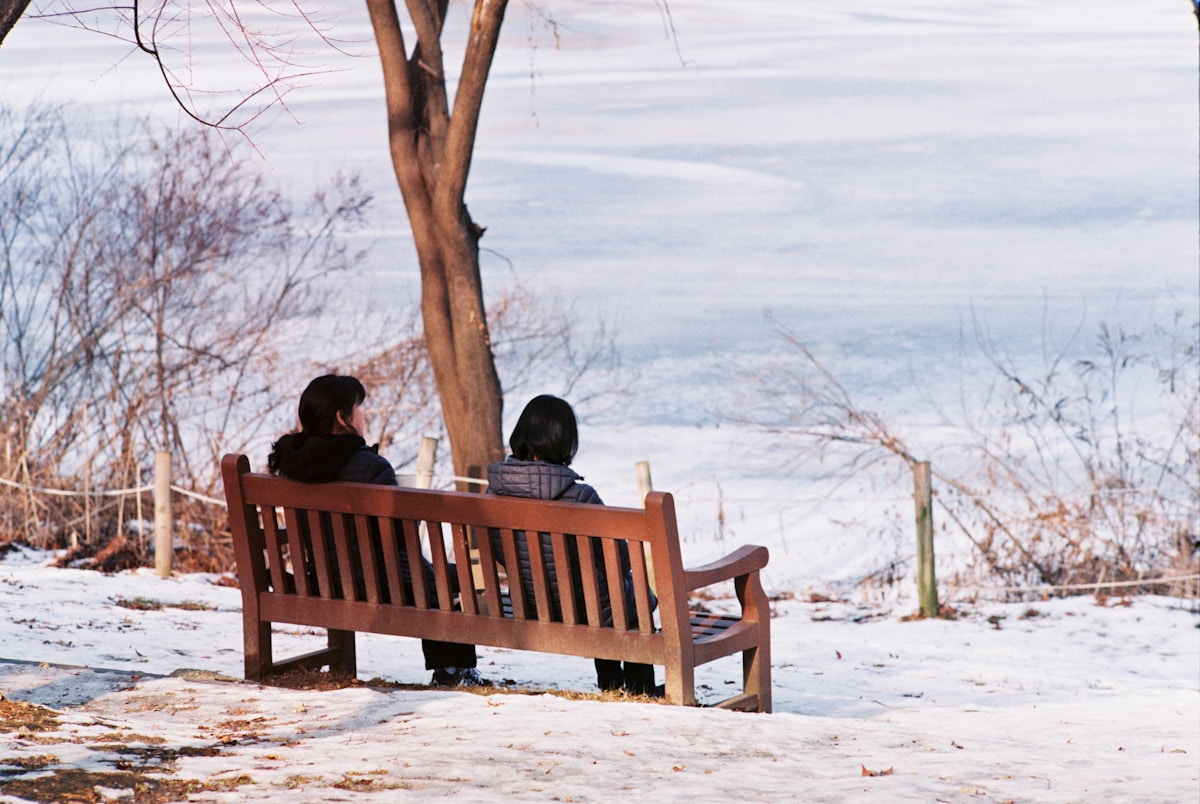
Visitors to Seoul should pack according to the city’s distinct seasonal variations, with light breathable clothing for the humid summers and insulated layers for the frigid winters.
Spring travelers benefit from bringing lightweight jackets and allergy medication due to the yellow dust phenomenon, while autumn visitors need medium-weight clothing that can be layered as temperatures fluctuate throughout the day.
Regardless of season, comfortable walking shoes, a portable umbrella, and a small daypack prove essential for traversing Seoul’s expansive urban landscape and unpredictable weather patterns.
1. What to Wear for Each Time of Year
Seoul’s dramatic seasonal changes demand thoughtful packing strategies for travelers year-round.
The city’s distinct seasons require specific wardrobe choices:
- Spring (March-May): Light layers, waterproof jacket, comfortable walking shoes
- Summer (June-August): Breathable fabrics, sun protection, quick-dry clothing
- Fall (September-November): Light sweaters, scarves, camera for foliage
- Winter (December-February): Insulated coat, thermal layers, snow-appropriate footwear
- Year-round: Modest attire for temple visits
2. Essentials to Bring for Comfort and Convenience
While packing the right clothing for Seoul’s varied seasons forms the foundation of travel preparation, bringing specific comfort and convenience items can transform a good trip into an exceptional one.
Essentials include a quality portable charger, comfortable walking shoes, a T-Money card for public transit, medication, plug adapters, face masks (for pollution days), and a translation app with downloaded Korean phrases.
Final Tips for a Smooth Vacation to Seoul
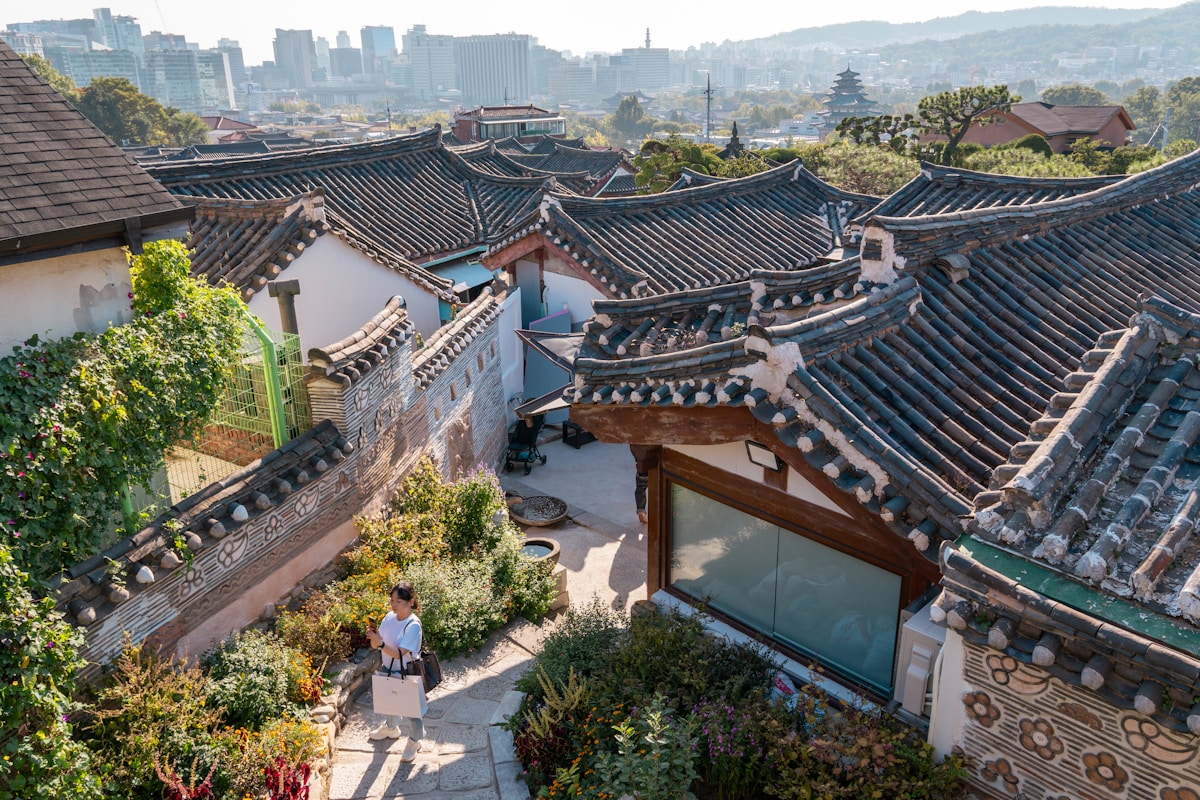
First-time visitors to Seoul should familiarize themselves with essential cultural etiquette and basic Korean phrases to enhance their experience.
The city’s extensive public transportation system requires a T-money card, which can be purchased at any convenience store and used for subways, buses, and even some taxis.
Carrying cash remains important as smaller establishments may not accept credit cards, while downloading translation apps and maps that work offline will prove invaluable when traversing Seoul’s diverse neighborhoods.
Things to Know Before Visiting Seoul for the First Time
Many first-time visitors to Seoul make avoidable missteps like underestimating subway travel times or missing out on essential cultural etiquette.
Tourists can enhance their experience by researching common practices beforehand, such as removing shoes when entering traditional establishments and carrying cash for smaller vendors.
Planning strategically, with buffer time between attractions and a flexible itinerary that accounts for unexpected discoveries, helps travelers enjoy Seoul without unnecessary frustration.
1. Common Tourist Mistakes to Avoid
Traversing Seoul can be overwhelming for newcomers who might unwittingly fall into common tourist traps that locals easily sidestep.
- Avoiding eye contact with elderly passengers on subway priority seating
- Wearing shoes inside traditional hanok accommodations
- Tipping at restaurants, which isn’t customary in Korean culture
- Expecting widespread English fluency outside tourist districts
- Missing the last subway at midnight, requiring expensive taxi alternatives
2. How to Make the Most of Your Trip Without Stress
To seamlessly enjoy Seoul’s dynamic landscape, visitors should prepare strategically before starting their Korean adventure.
Download offline maps, carry a portable Wi-Fi device, and keep a translation app handy. Rise early to avoid crowds at popular attractions and schedule rest periods between activities.
Embrace local etiquette, removing shoes indoors and accepting food with both hands, to enhance cultural immersion.
Wrapping Up
Seoul offers a enchanting blend of ancient traditions and cutting-edge modernity. Visitors should secure proper documentation, budget wisely, and select accommodations in neighborhoods like Myeongdong or Hongdae.
With efficient public transportation, delectable cuisine, and attractions ranging from palaces to shopping districts, travelers can experience the city’s dynamic culture year-round, though spring and fall provide the most pleasant weather conditions.



